1. The Yacare Caiman: A Beast Like No Other
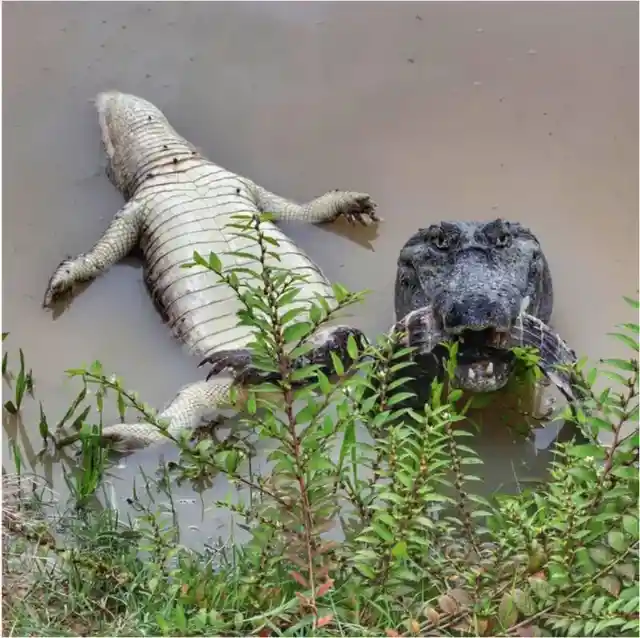
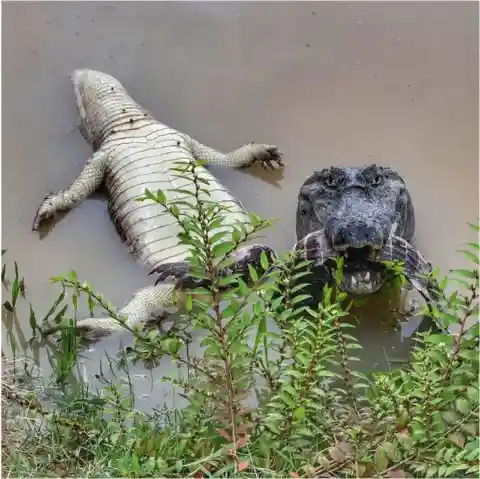
When it comes to cold-blooded creatures of the scaley kind, we've seen our fair share of alligators and crocodiles. But let me tell you, folks, the Yacare Caiman is a whole different ball game. These nearly prehistoric beasts roam the wilds of South America, lurking in the vegetated marshes of Argentina, Brazil, and Paraguay.
Now, they don't normally have a taste for their own kin, but when push comes to shove, they won't hesitate to chow down on whatever is within reach. These formidable creatures are known to feast on a diet of fish, snakes, and snails that call the region home. But with jaws that could rival any seasoned chef's knife set, they can pretty much order anything they desire from the menu.
Imagine being in their presence, my friends, those piercing eyes focused on their prey, their teeth designed for maximum damage. It's a display of primal instinct and survival at its finest. These Yacare Caimans command the waters they inhabit, striking fear into the hearts of any unfortunate creature that crosses their path.
So, as we delve into the world of the Yacare Caiman, we uncover the essence of a true beast unlike any other. They may prowl the marshes, but their power extends far beyond their murky domain. As nature's ultimate opportunists, they reign supreme, devouring whatever satisfies their voracious appetite.
2. When Friendship Turns Fatal: The Tale of Marius Els and Humphrey the Hippo
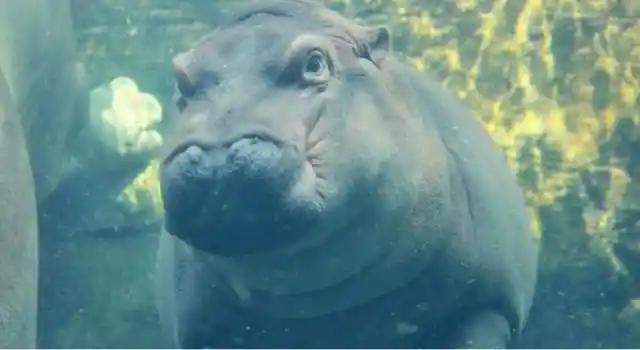

Back in 2005, in the heart of South Africa, a man named Marius Els made headlines in a way that seemed straight out of a storybook. He rescued a baby hippo from a rapidly rising river and, like any hero in a tale, he adopted the little guy. This wasn't just any pet; this was Humphrey, a hippo who quickly became more than just an animal to Els. He was "like a son."
For five years, their bond seemed unbreakable. Els and Humphrey were inseparable, a duo that defied the norms of nature and nurture. But nature has a way of reminding us of its rules, often in the harshest ways possible. Humphrey started showing his wild side, becoming aggressive and attacking people on Els' farm. No one really knows what flipped the switch in Humphrey's mind, but the outcome was as tragic as it was shocking.
In a grim twist of fate, in 2011, the very river where their story began became the scene of a heartbreaking end. Els' lifeless body was found, a victim of a brutal mauling by none other than Humphrey. The river that once symbolized life and rescue had turned into a place of death and despair. It was a stark reminder that even the strongest of bonds can be fragile when it comes to the unpredictable nature of the wild.
3. A Leopard's Cunning: A Tale of Survival in the Wild
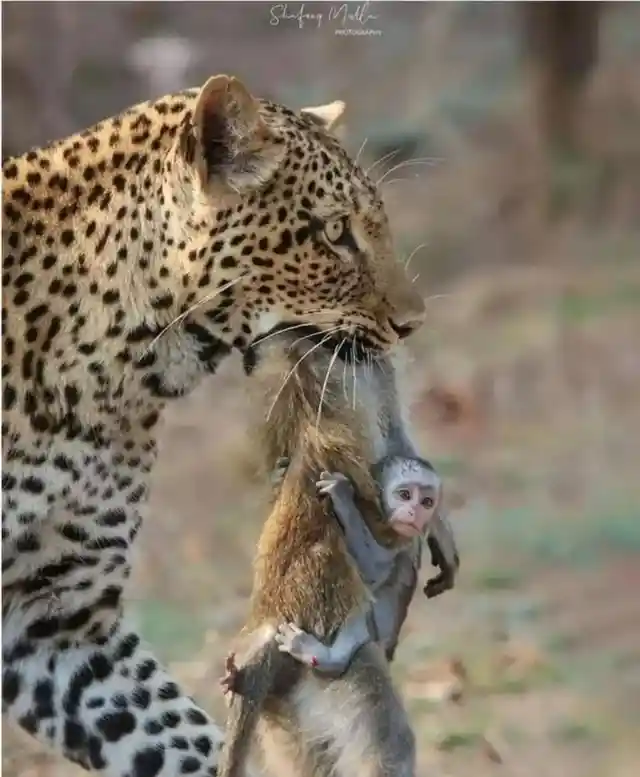
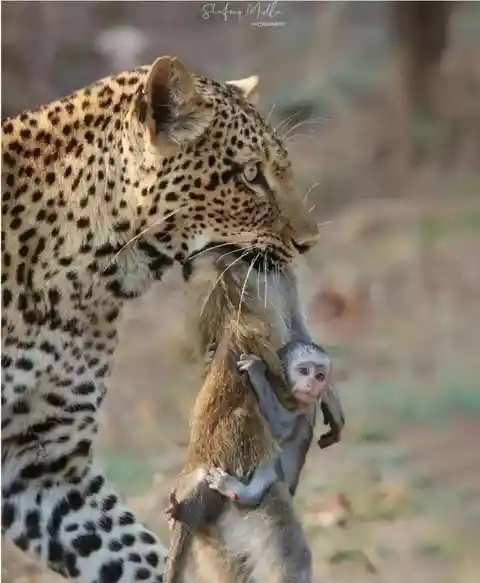
There I was, deep in the jungle, witnessing a scene that was as heart-wrenching as it was fascinating. A leopard, one of nature's most efficient predators, had just made a kill. But this wasn't just any hunt; the leopard had caught a female vervet monkey, and clinging to the lifeless body was her baby, still alive and unaware of the tragedy that had unfolded.
This image, as sad as it was, revealed a brutal truth about survival in the wild. The leopard, often misunderstood as cruel, was actually employing a clever hunting strategy. It wasn't harming the baby monkey; instead, it was using it as bait. The plan was simple yet morbid: the baby would attract other monkeys, hoping to rescue it, only to become the leopard's next meal.
German photographer Thomas Retterath was there, capturing this chilling strategy. He shared with The Daily Mail, “The leopard bit down just so hard that the monkey was not hurt. She took it in her mouth, as if she were transporting her own offspring. The cat apparently used the tiny one as bait in the intention that one of the adults would become careless and start a rescue operation. We watched this spectacle for 30 minutes. None of the monkeys got cocky and we left the crime scene, because we had to get to our bush flight. The cat had not killed the monkey by then.”
This encounter was a stark reminder of the raw, unforgiving nature of the wild. It was a display of the leopard's intelligence and adaptability, a survival tactic honed through generations. As we left the scene, the drama of life and death in the jungle continued, untouched and unscripted by human hands.
4. A Night Among Glowing Gators: A Photographer's Tale
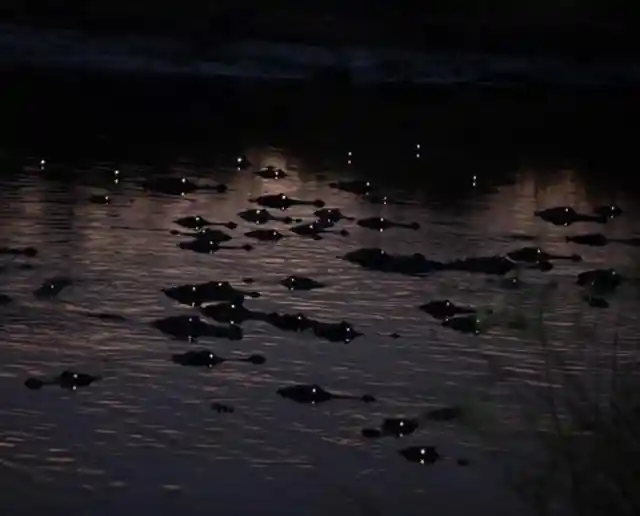

It was a night in April 2022, in the heart of Big Cypress National Preserve, when photographer Bobby Wummer captured a scene straight out of a thriller. His photo revealed a chilling sight: countless alligators, their eyes glowing ominously in the dark, lurking in their watery domain, each waiting for an unsuspecting meal to wander too close.
Now, before you think these gators have some supernatural powers, let me clarify something. That eerie glow in their eyes? It's not natural. It was the flash from Wummer's camera that lit them up like a spooky Christmas tree. But don't let that little detail fool you into thinking the scene was any less intimidating.
Wummer himself admitted that what his phone captured was just the tip of the iceberg. There were far more of these fearsome reptiles hidden beneath the murky waters than his lens could encompass. Not exactly a comforting thought, right? But there's something undeniably fascinating about seeing such a massive congregation of these ancient predators, silently floating in the southeastern coast's waters.
That night, as Wummer peered through his camera at the glowing eyes of these alligators, he wasn't just taking a photo; he was capturing a rare glimpse into the wild, untamed heart of nature. And in that moment, the line between fear and awe blurred, leaving an unforgettable image etched in memory.
5. A Lion's Tongue: More Than Just a Rough Lick


You're up close with a lion, the majestic king of the jungle. Now, take a moment to think about its tongue. It's not like the tongue of any other mammal, and certainly nothing like your average house cat's. This thing is larger, way more coarse, and has a purpose you might not expect.
You see, a lion doesn't just use its tongue for grooming its magnificent mane. Oh no, it's got a more gruesome job – stripping the feathers and fur off its prey. And trust me, you wouldn't want that tongue anywhere near your face.
The best way I can describe it? Think of a piece of sandpaper, but rougher, bigger, and attached to a massive, powerful animal. Just one casual lick from a lion could draw blood. It's that abrasive. And let's not even go into what would happen if a lion decided you needed a bit of 'cleaning up'. It's a thought best left to the imagination, but it sure gives a whole new meaning to the phrase 'lick your wounds'!
6. In the Shadow of Predators: The Risky Lives of Herons and Eagles
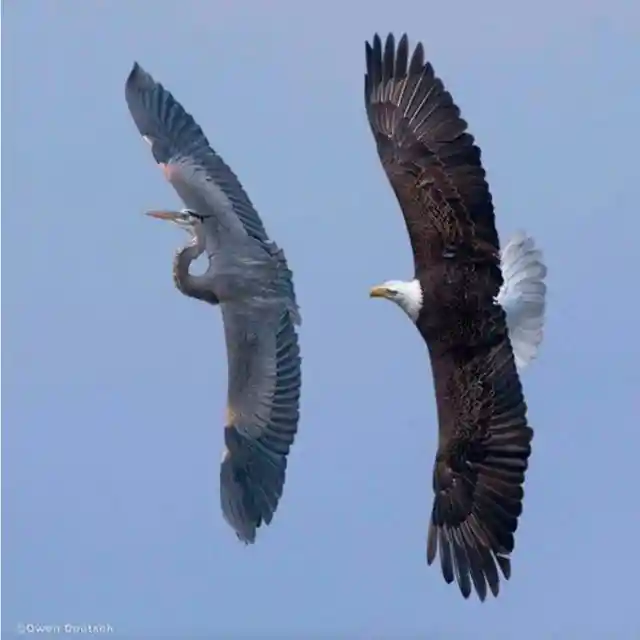
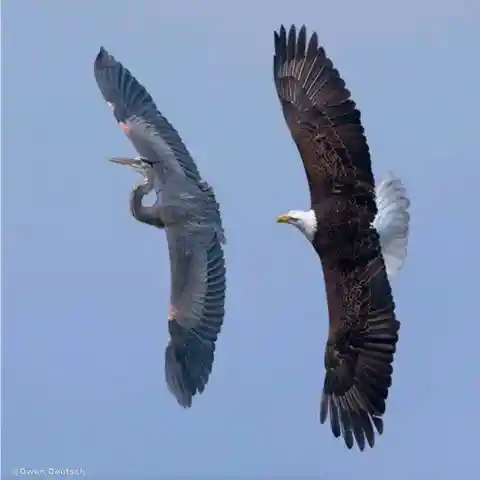
A bald eagle, majestic and fierce, is in hot pursuit of a great blue heron. It's a scene straight out of a wildlife documentary, and believe it or not, it's pretty common in the animal kingdom. Eagles, being the apex predators they are, don't think twice about hunting down a heron. But here's the twist – the herons, it seems, are practically asking for trouble.
You see, on the southwest coast of British Columbia, researchers have noticed something peculiar. Herons are setting up their nests right near eagles, their mortal enemies. It sounds like a plot to a suspense thriller, doesn't it? Why on earth would these birds choose to live so close to danger?
The answer is a bit of a survival paradox. By nesting near eagle pairs, herons actually protect themselves from other predators. It's a risky strategy, kind of like living next to a sleeping giant to keep away the pesky burglars. Sure, they might lose a few of their young to their eagle neighbors, but in the grand scheme of things, it's a trade-off that ensures the survival of their species. It's a tough call, but in the wild, it's all about making sure your kind lives on, even if it means bunking with the enemy.
7. Close Encounters of the Slithery Kind
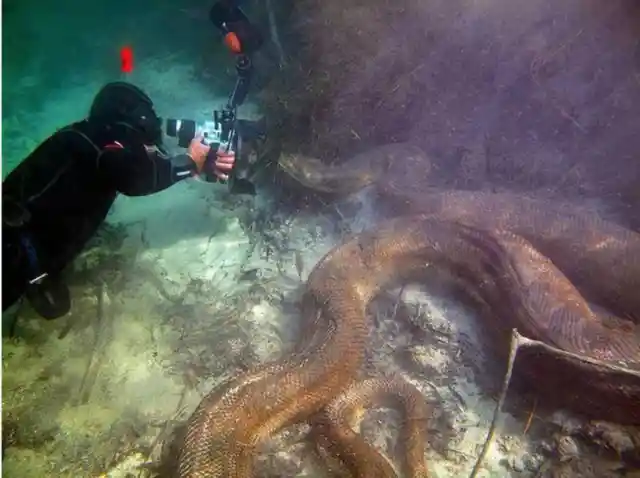

Imagine diving into the waters of South America and coming face-to-face with a creature straight out of a horror movie. But this isn't fiction; it's the real deal. I'm talking about giant anacondas, lurking in the muddy waters, just waiting to make your acquaintance. And if you're brave enough, you can get a crystal-clear view of these behemoths in the Formosa River in Brazil.
Now, let me introduce you to Bartolomeo Bove, a professional shark diver who's no stranger to heart-pounding encounters. But even he was taken aback when he met a 23-foot anaconda, tipping the scales at about 200 pounds. You'd think this massive snake would be all about intimidation, right? Wrong. Bove found that the anaconda was hardly interested in him after their first meet-and-greet.
He shared with The Dodo, “The anaconda swims calm and peaceful, completely indifferent to our presence. Sometimes she comes closer, curious about my camera, licking the lens. The behavior of the anaconda debunks the myth that it is an aggressive and violent creature that can endanger people's lives.”
So there you have it, a tale that turns the tables on our fears. These giant snakes, often cast as villains in our stories, are just peaceful giants gliding through their underwater world, more curious about cameras than causing chaos. It's encounters like these that remind us how much there is to learn about the misunderstood creatures sharing our planet.
8. Unearthing the Terror of the Ancient Seas: Phiomicetus Anubis


Let me take you back to 2021, in the vast, sun-scorched Egyptian desert, where something incredible was unearthed. Hidden beneath the sands for eons, scientists discovered fossils of a creature that sounds like it's straight out of a prehistoric horror story. Meet the Phiomicetus anubis, a 43-million-year-old whale, but not the kind you're picturing.
Forget about the gentle giants serenely gliding through the ocean. This beast was a different breed altogether. Picture this: a whale that could walk on four legs, armed with razor-sharp teeth designed for one thing – tearing its victims to shreds. It's like something out of a nightmare, isn't it?
Weighing a whopping 1,300 pounds, the Phiomicetus anubis was like a monstrous mash-up of a killer whale and a large dog. Just thinking about encountering this creature gives me the chills. And while it wasn't the first whale with legs to be discovered, it holds a special place in history. It's believed to be the earliest semi-aquatic species found in Africa. Imagine that – a walking, swimming, flesh-ripping whale, ruling the ancient waters. It's discoveries like these that remind us just how wild and unpredictable the story of life on Earth really is.
9. The Fierce Side of Penguins: A Glimpse into Their Hunting Prowess
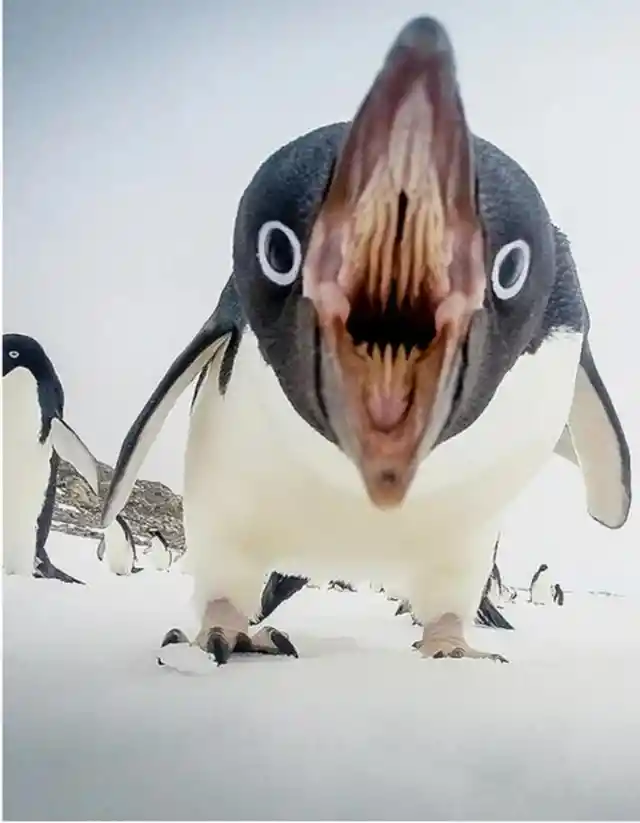
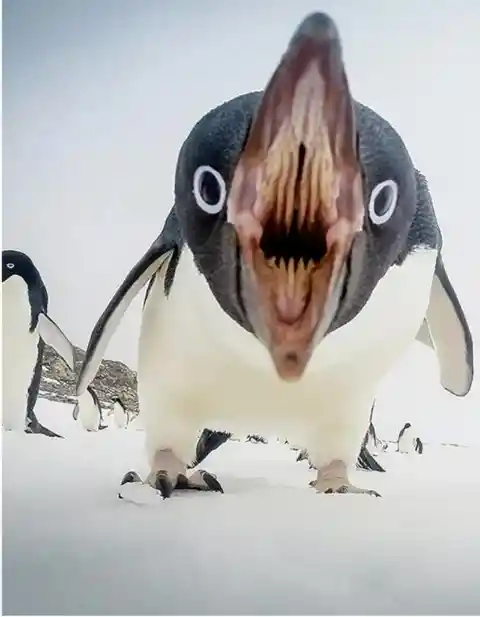
Let me paint a picture for you that might change the way you see those adorable, tuxedo-wearing birds we call penguins. Sure, they waddle around awkwardly on land, looking all innocent and clumsy. But don't let their appearance fool you. Each of these flightless birds is a fearsome predator in its own right.
Their diet? It's not just a casual peck at some fish here and there. We're talking fish, krill, and even small squid. And the way they hunt? It's a mix of grace and ferocity. In the water, they're like sleek, silent assassins, darting through with incredible agility to snap up their prey. But it's not all underwater stealth.
Take a look at this photo. It's like a scene from a thriller where the unsuspecting fish meets its end, not in the depths of the ocean, but on land, at the beaks of these seemingly docile creatures. When it comes to feeding time, penguins are all business. They'll do whatever it takes, often banding together in large groups, to ensure they stay well-fed in the harsh Arctic tundra. So next time you see a penguin, remember, beneath that cute exterior lies the heart of a skilled hunter, perfectly adapted to its icy world.
10. The Firehawk: Nature's Arsonist in the Sky

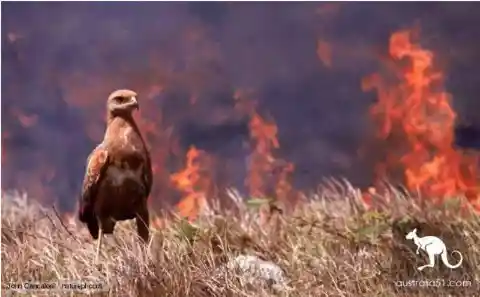
Let me tell you about a snapshot that looks like a scene from a fantasy movie, but it's as real as it gets. It's not just a bird caught in front of a blazing fire. This is the Australian Firehawk, a bird so cunning it's known to use fire as a tool, something we usually think is uniquely human.
Mark Bonta, an assistant teaching professor of earth sciences at Penn State Altoona, sheds some light on this fascinating behavior. He says, “In the Western mind fire is the one thing animals don’t have. Fire is what made us human. We take for granted ignition and the ability to burn. There’s a lot to be said for what fire did for us—incredible weapons, firearms, being able to set fires. Fire is what gave us power over other animals... There’s loads to find out. We just learned in 2016 that birds’ neurons are packed differently. They’re way smarter than we thought. We’re just beginning to understand avian memory. Crows’ problem-solving ability is amazing. There are a lot of tool-using behaviors.”
This revelation about the Firehawk is a game-changer. It challenges our long-held belief that fire is a human-only tool. It turns out, these birds are not just flying around aimlessly; they're strategic, using fire to flush out their prey. It's a stark reminder of how much we still have to learn about the animal kingdom, especially birds, whose intelligence and capabilities are proving to be far beyond what we ever imagined. The Firehawk, with its mastery of fire, is not just an arsonist of the skies, but a symbol of nature's untapped and extraordinary intelligence.
11. A Clash of Titans: The Unlikely Rescue in Kruger National Park

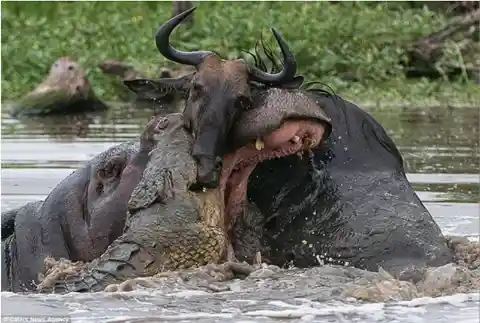
In the wild heart of Kruger National Park, South Africa, I witnessed a scene of raw power and unexpected alliances. A wildebeest, caught in the deadly grip of a crocodile's jaws, was fighting for its life. The crocodile, a master predator, had stealthily snuck up and clamped down on the wildebeest's hind legs. It seemed like the end for the poor creature, but nature had a twist in store.
Out of nowhere, a pair of hippos emerged from the water. Now, you might think of hippos as gentle giants, but in this moment, they were the wildebeest's unlikely saviors. They charged into the fray, taking on the crocodile in a dramatic battle for supremacy. The tension was palpable as these titans clashed, each powerful in their own right.
Miraculously, the wildebeest managed to escape with its life, a testament to the unpredictable nature of the wild. But the story doesn't end there. Doug McCauley, an ecologist at the University of California, Santa Barbara, shared a sobering thought with Live Science: “It sort of dodged one bullet but is unlikely to miss the next one from terrestrial predators — lions, hyenas, that sort of thing — unless it's somehow able to shake off that injury to that hind leg, which looks like it's quite severe.”
This encounter was a stark reminder of the brutal reality of nature, where every day is a battle for survival, and sometimes, the most unexpected events can turn the tide.
12. The Unexpected Predator: Heron vs. Crocodile
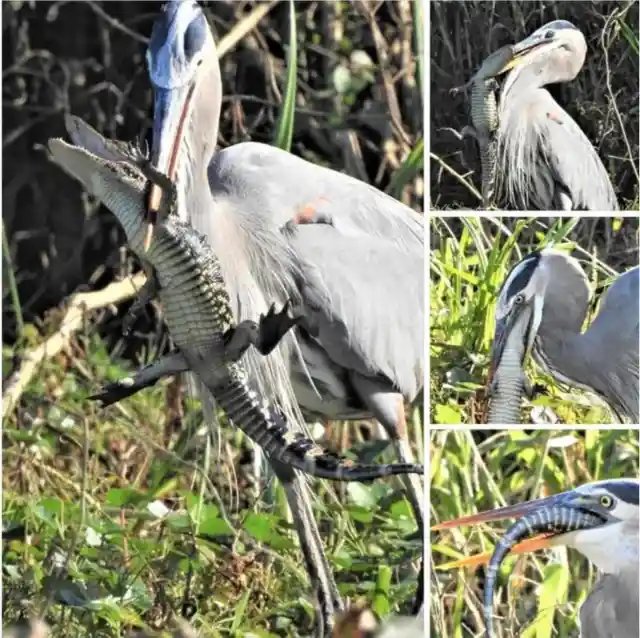

There I was, on the tranquil shores of Lake Apopka, just north of Orlando, immersed in the peaceful pastime of birdwatching. But nature had a surprise in store. What unfolded before my eyes was a scene that flipped the script on predator and prey. A heron, usually seen as a graceful and harmless bird, transformed into a formidable hunter, setting its sights on an unusual target – a young alligator.
In 2020, this extraordinary moment was captured by a photographer, revealing a side of herons we seldom consider. We often think of alligators as the undisputed rulers of the wetlands, the aggressors in any wildlife encounter. But here was a heron, boldly challenging this notion, swooping in with precision and snatching up the reptile.
Herons, it turns out, are not picky eaters. Their diet is as varied as nature itself, ranging from bugs and rodents to fish and even other birds. So, the sight of a heron feasting on an alligator, while shocking, isn't entirely out of character for these adaptable birds. The Audubon Society notes that herons typically wait on the shoreline, patiently watching for prey. Once they spot an opportunity, it's a swift and decisive end for their target.
This encounter was a vivid reminder of the unpredictability and rawness of nature, where survival often means blurring the lines between the hunter and the hunted.
13. Chill Survival: Alligators in Winter
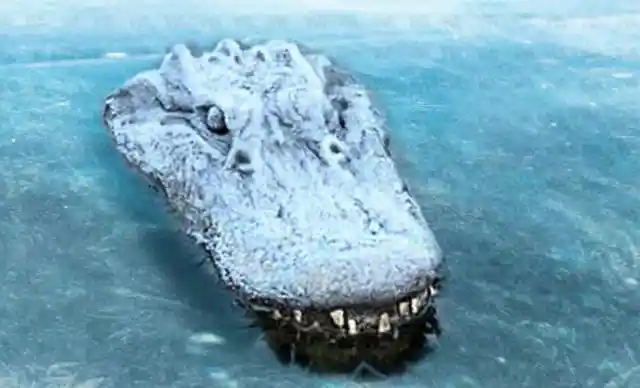
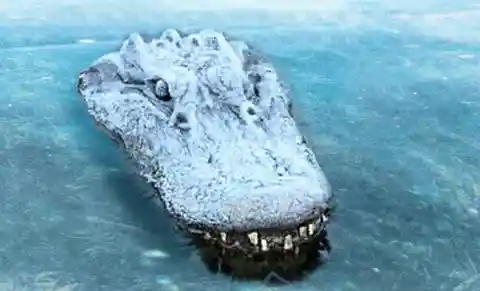
Think of a lake, serene and still, under the crisp winter sky. Now picture this: alligators, those fierce, prehistoric-looking creatures, doing something you'd never expect. As the lake freezes over, they poke their heads, or sometimes just their noses, above the water line, waiting patiently for the thaw. It's a sight that's as bizarre as it is fascinating.
For us, especially the college crowd, getting "iced" usually means something entirely different, involving a surprise beverage. But for alligators, "icing" is a survival technique in the cold-blooded playbook. While mammals hibernate to escape the harsh winter, reptiles like alligators go into brumation. It's like hitting the pause button on their metabolism, a way to conserve energy when the going gets tough.
During this time, as long as the water beneath them stays liquid, these alligators are just fine. And here's a cool fact: their snouts are made of pure cartilage, which means they don't feel any pain during this process. It's a remarkable adaptation, a testament to the resilience and ingenuity of nature.
So next time you're wrapped up warm, sipping hot cocoa and watching the snowfall, spare a thought for the alligators, doing their version of winter survival, one icy snout at a time.
14. Fierce Battle in the Wild: Tiger vs. Sloth Bear
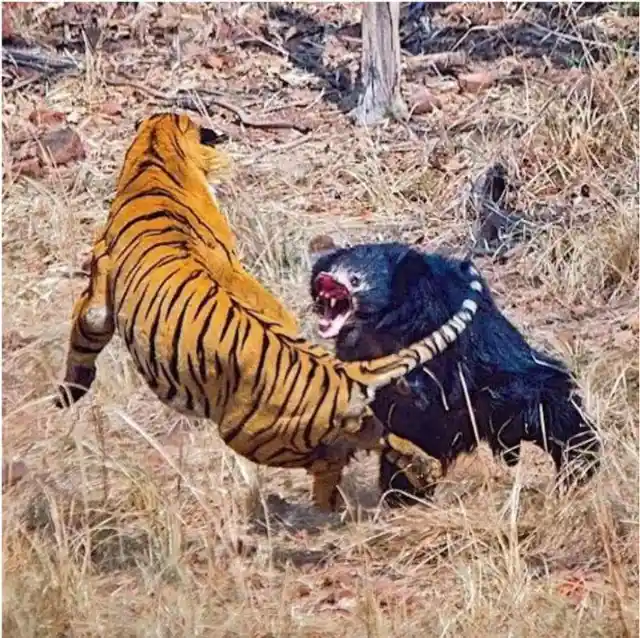

In the untamed heart of Maharashtra's wilderness, a dramatic and brutal battle unfolded, a stark reminder of nature's raw intensity. Akshay Kumar, the chief naturalist at Bamboo Forest Safari Lodge, was witness to this fierce encounter between two of the jungle's formidable inhabitants: a tiger and a sloth bear.
The clash erupted over something deeply ingrained in the animal world – the protection of one's young. The sloth bear made a daring, perhaps desperate, move to snatch away the tiger's cub. In the animal kingdom, that's a major transgression, a trigger for a fierce reaction. And react the tiger did.
As the two giants collided, the air was filled with roars and growls. The tiger, with its lethal prowess, attacked the bear relentlessly for over five minutes. But the sloth bear, driven by a mother's instinct to protect her cub, charged back with equal ferocity. The bear's thick fur was its armor, shielding it from the worst of the tiger's assaults.
Kumar recounted the intensity of the fight to NDTV: “The tiger attacked the bear more than five minutes. It went after the sloth bear but she kept charging in order to protect her cub. It went on for 15 minutes. The tiger was roaring. It was a severe fight.”
This encounter was more than a fight for survival; it was a testament to the fierce maternal instinct and the unyielding will to protect one's offspring, a scene that captures the essence of life in the wild.
15. The Mysterious Cork-Lid Trapdoor Spider: More Than Meets the Eye
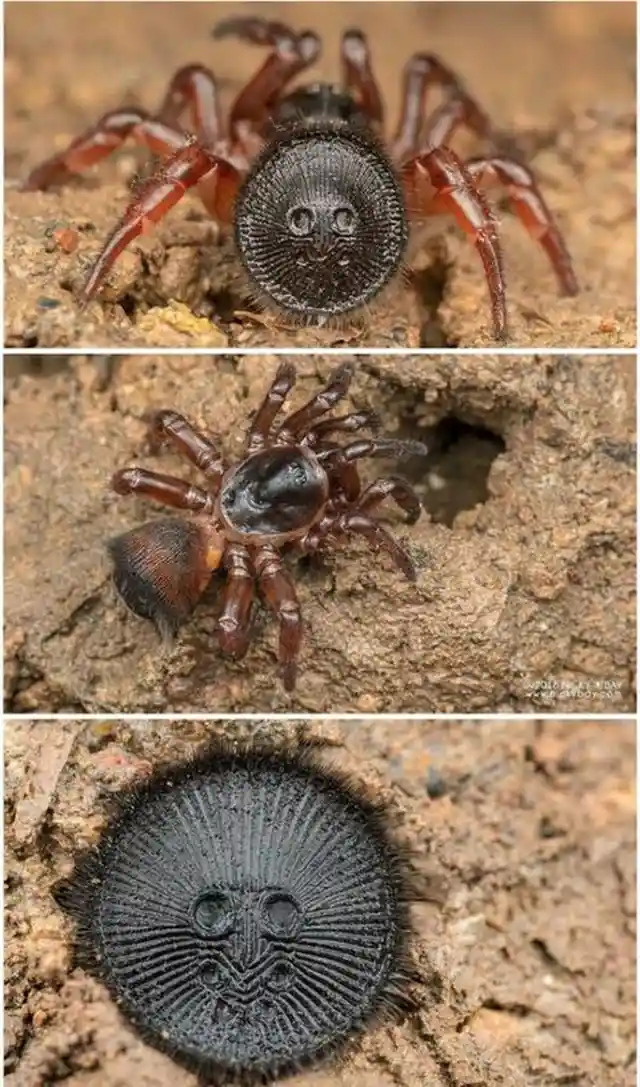
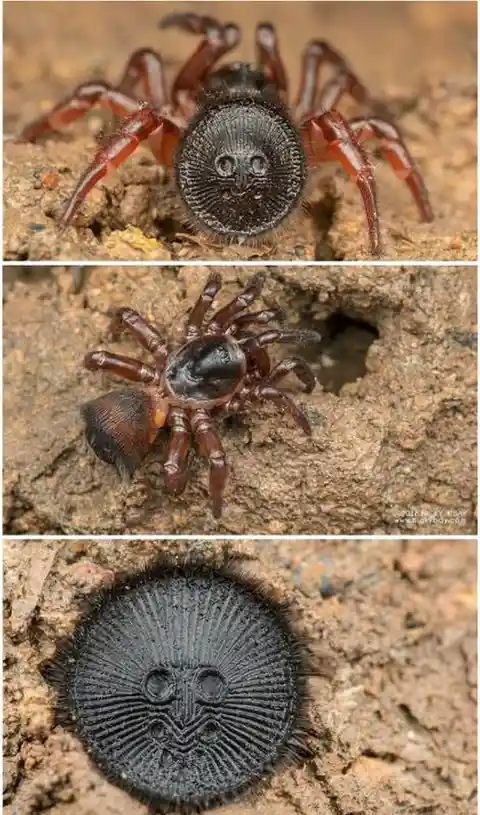
In the intriguing world of spiders, there's one that could easily be mistaken for a piece of ancient treasure hidden in the sand. It's the Cork-Lid Trapdoor Spider, a creature that became an internet sensation, thanks to the captivating photos taken by photographer Nicky Bay. But let me tell you, there's more to this spider than meets the eye.
When Bay's photos hit the web, they sparked a flurry of rumors and myths. People were fascinated by the idea of a venomous spider luring in humans with what looked like a fancy coin on its back. It sounds like something out of a fantasy novel, doesn't it? But here's the real deal.
Yes, the Cork-Lid Trapdoor Spider is venomous, but it's far from being a threat to us. This little arachnid is more of a shy recluse than an aggressive predator. It would much rather stay hidden and out of human sight than go on the offensive. Sure, it has been known to bite humans, but its bite is a far cry from the more dangerous venomous bites we often hear about.
So, next time you come across what looks like an ancient coin buried in the sand, remember, it might just be the Cork-Lid Trapdoor Spider, a fascinating creature that's a part of our natural world's wonders, not a danger lurking in the shadows.
16. Invasive Pythons vs. Native Alligators: The Florida Showdown
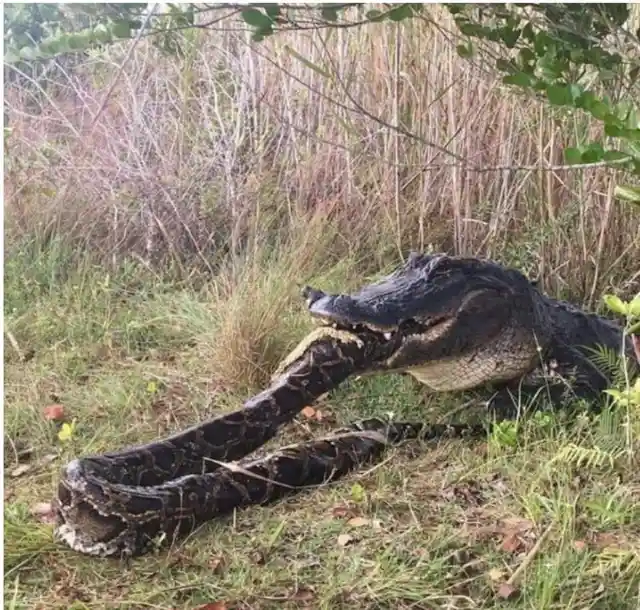

Down in Southern Florida, there's a clash of titans happening that sounds like something out of a wildlife epic. The Burmese python, an exotic invader, is going head-to-head with the American alligator, the undisputed champion of the swamps. These pythons, which were first introduced to Florida as exotic pets back in the '70s and '80s, have made themselves quite at home, growing up to a staggering 20 feet in length.
Now, imagine these giant snakes, slithering through the underbrush, coming face-to-face with an alligator, always ready for a rumble. It's a battle royale, and picking a winner isn't easy. Unless, of course, we're talking about the youngsters. Ian Bartoszek, a wildlife biologist with the Conservancy of Southwest Florida, shed some light on this to Newsweek: “When both species are young they are more vulnerable to predation, so a hatchling python would be no match for a juvenile alligator and vice versa. We have radio-tracked both hatchling and adult pythons to the bellies of American alligators, but we don't have reliable data on how often predation occurs from the perspective of both species. In the winter months, adult pythons tend to be more interested in mating behaviors and don't feed as often. But otherwise, alligator is on the menu when they have an opportunistic encounter.”
So, there you have it. In the wilds of Florida, it's not just the heat that's intense. It's a real-life survival of the fittest, where invasive pythons and native alligators are constantly sizing each other up, each a formidable opponent in their own right.
17. The Muddy Tiger: Master of Disguise
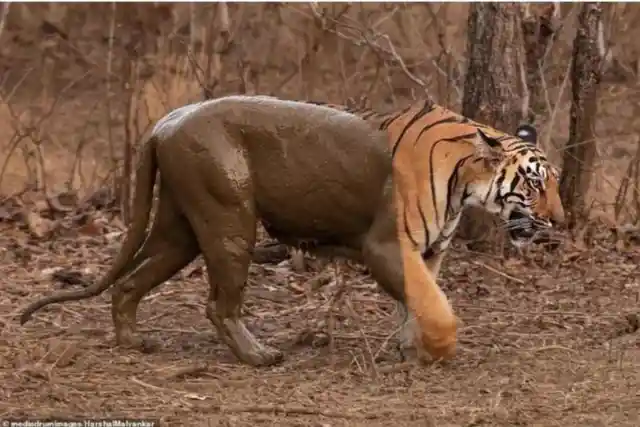
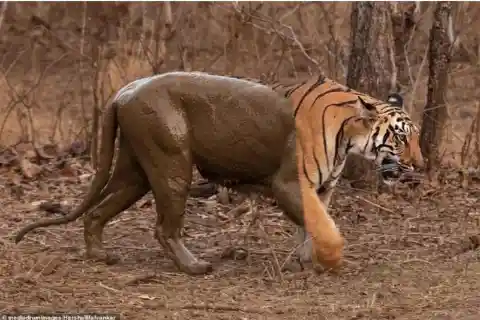
At first glance, you might think it's a trick of the light or some clever photo editing, but look again. What you're seeing is a real, live tiger, albeit a very muddy one. Tigers, with their striking orange, black, and white stripes, are usually easy to spot, right? Well, not always, especially not in this case.
Here's the thing about tigers – they're not just about majestic beauty; they're cunning hunters too. And their hunting prowess is partly thanks to how their prey sees the world. Most of their targets are dichromats, meaning they have just two color receptors in their eyes. This makes them red-green colorblind. So, what does this mean in the wild? It means that to these animals, a tiger doesn't stand out against the green jungle background. Instead, it blends in, looking more like a harmless pile of leaves than a fearsome predator.
For those of us with the ability to distinguish reddish-green hues, spotting a tiger isn't usually too challenging. That is unless the tiger pulls a sneaky trick and covers itself in mud. In that case, even the most eagle-eyed among us might just miss seeing one of nature's most impressive animals, hidden in plain sight. So, next time you're looking at a muddy jungle scene, take a closer look – you might just be staring at a tiger without even realizing it.
18. The Mighty Miniature: The Hero Shrew's Super Spine
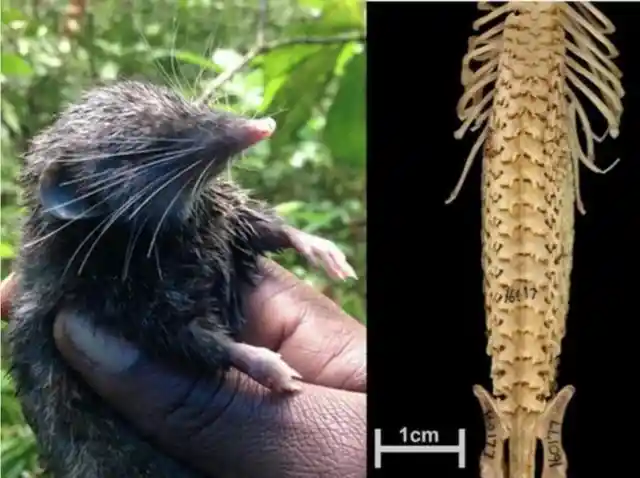

In the quirky world of small mammals, there's one that stands out with a superpower you wouldn't expect from its size. Meet the Hero Shrew, a tiny creature tipping the scales at a mere quarter of a pound. But don't let its size fool you – this little shrew packs a mighty surprise in its backbone.
This shrew's spine is the stuff of legends. It's not just strong; it's the strongest of any mammal, relative to its size. Imagine this: a spine so sturdy that it can support up to 150 pounds. That's like a human lifting a small car! Now, you might be tempted to test this by standing on one, but let's not turn wildlife into a circus act, shall we?
So, what's the secret behind this miniature marvel's super spine? Scientists believe it's all thanks to a quirky twist in evolution known as "punctuated equilibrium." This concept suggests that a species can remain pretty much the same for ages, then suddenly undergo rapid changes, leading to new forms or even entirely new species. In the case of the Hero Shrew, these changes gifted it with a thick, interlocking vertebrae, turning it into a tiny titan of the animal kingdom.
In a world where size often matters, the Hero Shrew is a reminder that sometimes, the most extraordinary strengths come in the smallest packages.
19. The Mystery of the Orange Alligators
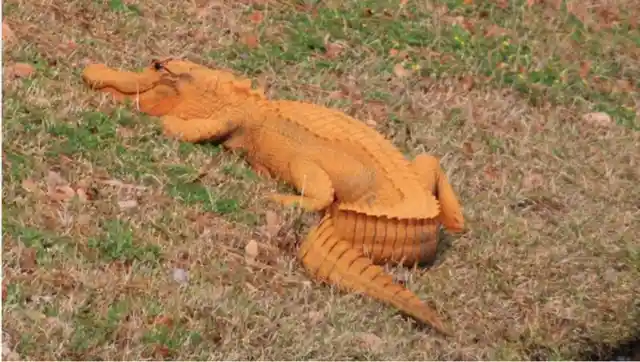
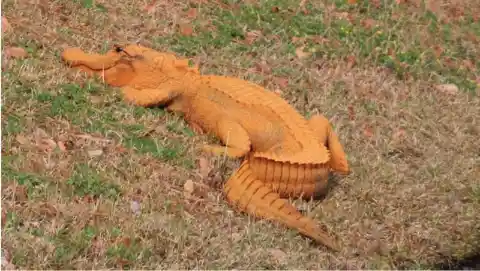
Back in 2011, something unusual started happening in the American Southeast. Alligators, those formidable, greenish-gray predators, began showing up in a color you'd never expect: orange. This sudden change had folks buzzing with theories. Were these alligators on the brink of an evolutionary leap? As intriguing as that sounds, the reality was a bit more down-to-earth.
The answer to this colorful mystery? Iron oxide. That's right, the same stuff that gives rust its reddish hue was turning these gators into something straight out of a coloring book. Gary Morse, an official from the Florida Fish and Wildlife, cleared up the confusion in a chat with WWSB-TV. He explained, “The official opinion from our alligator experts is that this alligator is not naturally orange. We believe it's orange from paint, stain, iron oxide or some other element in the environment that has left a coating on the animal, making it appear orange.”
So, there you have it. No evolutionary magic, just a simple case of environmental factors giving these gators a temporary makeover. It's a little reminder of how even the mightiest creatures can be touched, quite literally, by the world around them. And while the orange alligators might not be a new step in evolution, they're certainly a fascinating footnote in the colorful tapestry of nature.
20. The Chaos Theory of Wolf Packs
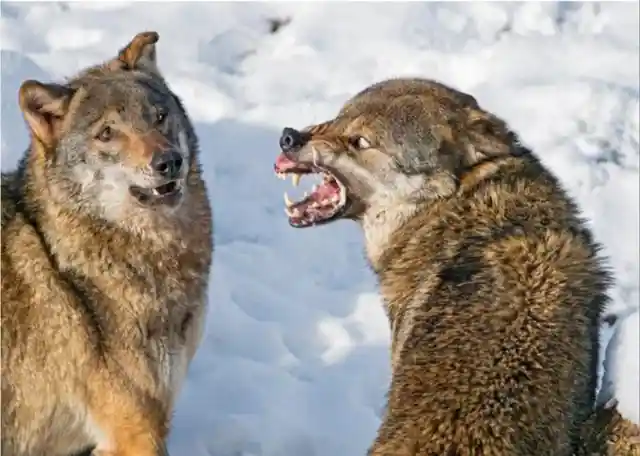

Think of wolves, and you might picture a well-oiled machine of a pack, moving and hunting in perfect harmony. But, like any family, even wolf packs have their share of drama and chaos, especially when it comes to their group dynamics. It's not all howls and teamwork; sometimes, things can get pretty dicey.
The pack leader, while commanding respect, doesn't have an easy job. Imagine trying to keep order when the pack gets too big. That's when the real trouble starts. Lee Spector, a Professor of Computer Science at Hampshire College, sheds light on this wild canine conundrum. He says, “If a pack is too big, all hell breaks loose. The dynamics are chaotic, in the mathematical sense of chaos theory, and if you go above a certain number of wolves the prey can escape. That could explain why you don't see wolf packs above a fairly small number.”
It's fascinating, isn't it? The idea that there's a tipping point, a number that turns a coordinated pack into a chaotic mess. It's like a scene from a wildlife soap opera where too many characters spoil the plot. Spector continues, “When looking at animal behavior, you want to explain why it is the way it is. Computational and mathematical models provide new ways to explore candidate explanations.”
So next time you think about wolves, remember, they're not just about teamwork and family bonds. They're also a living example of chaos theory in action, a reminder that nature has its limits, even for the most organized of creatures.
21. When Predators Clash: The Shark and the Stingray
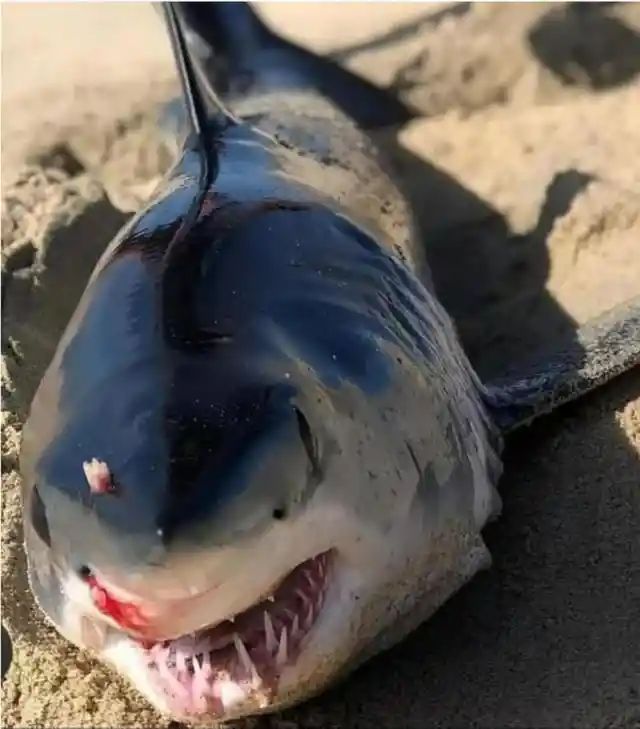
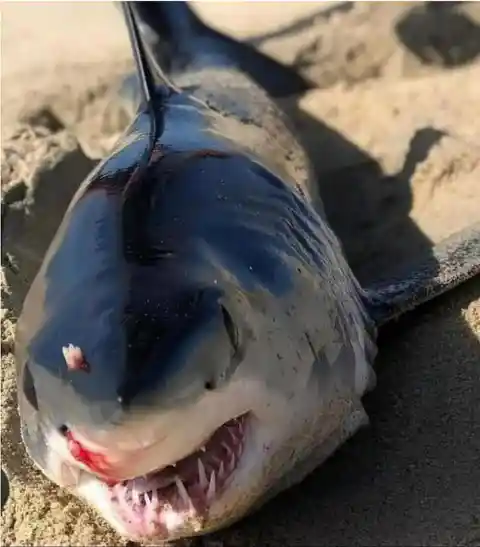
In the wild world of nature, especially beneath the waves, it's not just survival of the fittest – it's survival of the craftiest. Take, for instance, this startling scene from the ocean off the coast of Mexico. In March 2021, a group of fishermen in Cabo stumbled upon a small Mako shark with a stingray barb lodged in its head, right there on the beach. It's like something out of a marine thriller.
Now, Mako sharks and stingrays aren't known to be archenemies or anything. But the ocean is a place of fierce competition, and this unfortunate shark got a taste of it, quite literally. It's believed that this brutal encounter was the result of a spontaneous battle, possibly over a shared meal. Maybe they were both darting after the same school of fish or a tasty squid, and things just escalated.
It could have been a heat-of-the-moment clash, with both predators locked in a high-stakes hunt. Or perhaps it was more strategic, a deliberate move by the stingray to eliminate a competitor. Whatever the case, it's a stark reminder of the relentless and sometimes brutal nature of life under the sea. In the vast, blue depths, it's not just about hunting – it's also about outmaneuvering and sometimes, outlasting your rivals.
22. Tigers in the Snow: India's Unexpected Big Cats
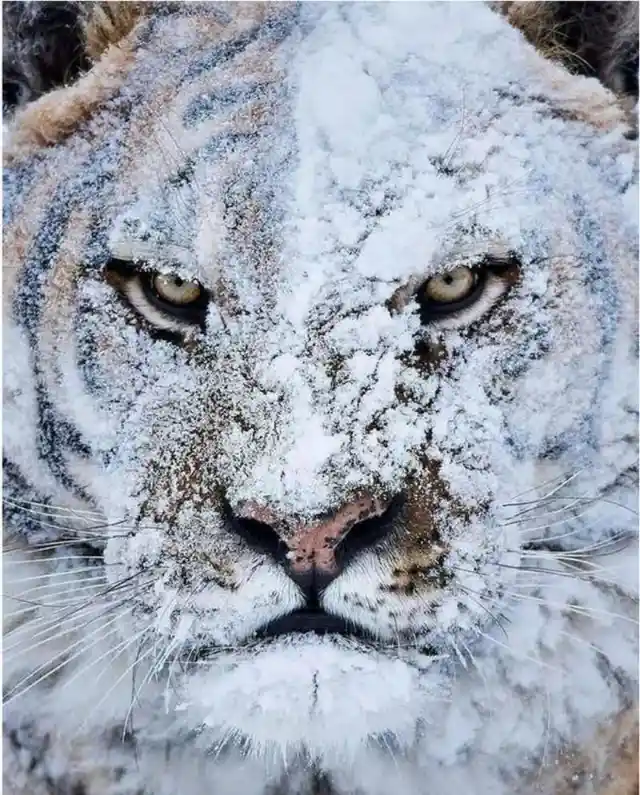
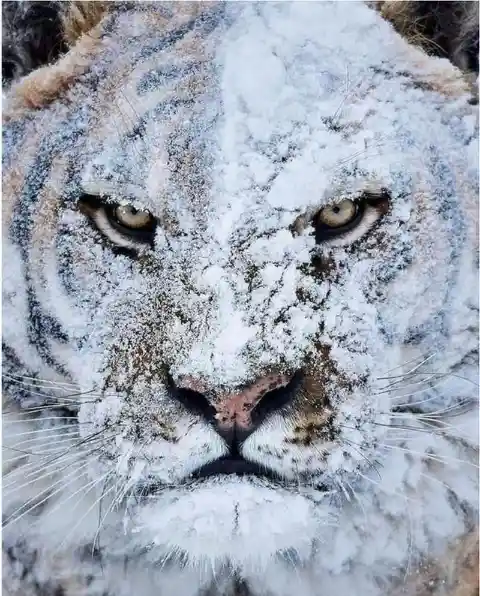
When you think of tigers, you probably imagine them lounging in the steamy jungles of India, not padding through snow. But nature loves to surprise us. Up until the late 2010s, researchers were in the same boat; they thought snowy habitats were exclusive to their Siberian cousins. But here's the twist: a significant number of Indian tigers call the snowy, mountainous region of Arunachal Pradesh, in northeastern India, their home.
It's a discovery that's rewriting what we know about these majestic creatures. These Indian tigers, which make up over two-thirds of the world's tiger population, have been thriving in this extreme terrain since the early 1900s. And who knows? They might have been ruling these snowy peaks for even longer than a century.
This revelation about the tigers' habitat is a testament to their incredible adaptability. Tigers are known for their ability to occupy a range of territories, but finding them in such a cold, harsh environment is still a bit of a shock. It's a reminder of the sheer resilience and versatility of nature. And let's be honest, the thought of these powerful big cats roaming the snowy mountains of India is not just fascinating – it's also a little bit terrifying.
23. Emus: The Terrifying Dinosaurs of Today
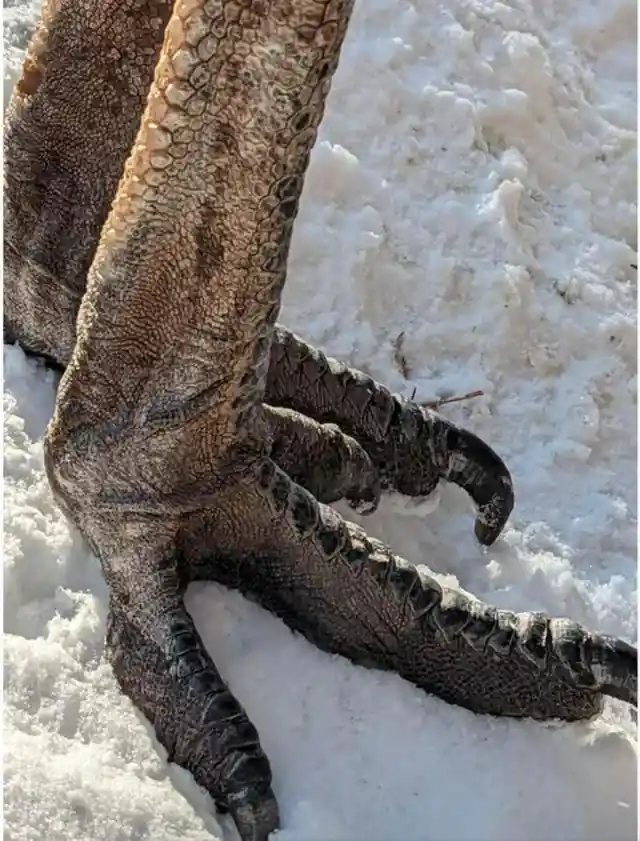
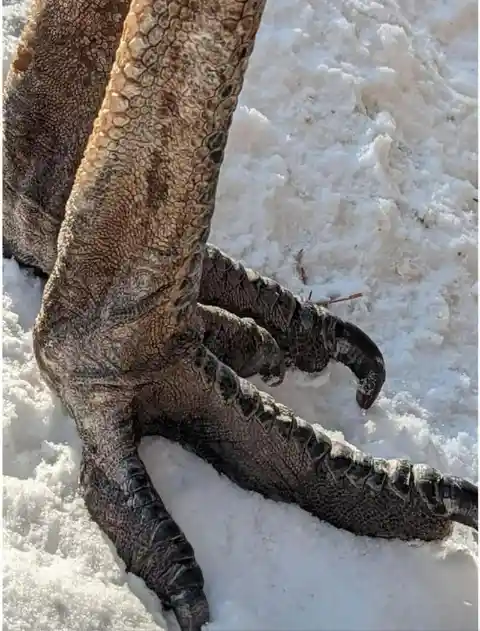
Picture this: you're strolling through the Australian outback when suddenly, you come face to face with an emu. Now, these birds are no joke. They're massive, towering over most humans, and those claws? They're like something out of a prehistoric nightmare. And here's a fun fact: emus are actually distant relatives of a dinosaur called Anzu wyliei. Imagine a creature 500 pounds heavier and stretching out to nearly 11 feet – that's Anzu for you.
Matt Lamanna, the head dinosaur expert at the Carnegie Museum of Natural History in Pittsburgh, once shared his thoughts with NPR about these ancient relatives of emus. He said, “If you were to take a time machine back to the end of the age of dinosaurs and encountered this animal, your first thought would probably be, 'What a big, weird looking bird.'” And he's not wrong. He even went on to say, “I actually think 'chicken from hell' is a pretty good nickname for this thing.”
So next time you see an emu, just remember, you're looking at a modern-day version of what might have been the most bizarre, intimidating bird-like dinosaur to roam the earth. It's like having a little piece of the prehistoric world still walking among us, minus the whole 'terrifying predator' part. Well, mostly.
24. Turtle's Surprise Attack: Not Your Average Slowpoke
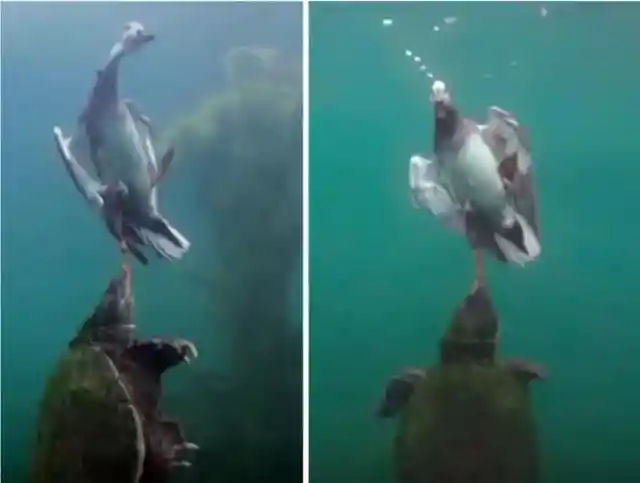
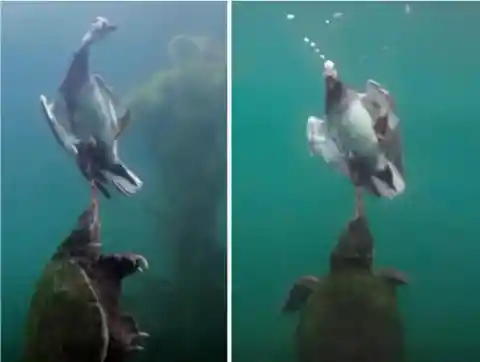
Here's a scene straight out of a wildlife thriller. Picture a serene river, birds chirping, ducks paddling around peacefully. Then, out of nowhere, a turtle, usually the poster child for slow and steady, turns into a fierce predator. This isn't a made-up story; it actually happened in the San Marcos River in Texas and was caught on camera for the 2014 documentary "Yakona," showcasing the area's wildlife.
We usually think of turtles as these gentle, slow-moving creatures, almost like wise old souls of the animal kingdom. But this footage flips that image on its head. Underwater, these turtles are like different beings – fast, agile, and surprisingly deadly. In this particular instance, a duck became the unsuspecting victim, dragged underwater by the turtle in a swift, unexpected move.
It's a stark reminder of how nature operates on its own terms, often brutal and unforgiving. The relationship between predator and prey can be a harsh reality, and even the creatures we perceive as harmless can surprise us with their hidden ferocity. So next time you see a turtle, remember, beneath that calm, slow exterior could be the heart of a skilled hunter, especially when it's lurking underwater.
25. The Fury of Nature: Typhoon's Wrath on a Lagoon


Imagine a peaceful lagoon, a picture of tranquility. Now, imagine that same lagoon transformed into a scene of chaos and destruction overnight. That's exactly what happened in 2021 when a monstrous typhoon tore through the Philippines. The storm unleashed its fury with record winds and relentless rain, turning lives upside down. Over 300,000 people found themselves displaced, stranded on an island that was ill-equipped to handle such a catastrophe.
This wasn't a one-off event. For those living in the eastern hemisphere, typhoons are a harsh reality, a recurring nightmare that strikes with devastating regularity. But no matter how often they come, nothing can truly prepare you for the sheer scale of destruction they bring. Homes, livelihoods, entire communities swept away or left in ruins.
Dennis Datu, a correspondent for ABS-CBN, captured the aftermath in words that paint a vivid picture: “We are seeing people walking in the streets, many of them shell-shocked. All buildings sustained heavy damage, including the provincial disaster office. It looks like it’s been hit by a bomb.” His words echo the stark reality of nature's power – unpredictable, unforgiving, and sometimes, brutally transformative.
26. Bull Moose Smash: When Reflections Get Real


My parents were in for a surprise when a hulking bull moose decided to throw down. He mistook his own reflection for a rival and went straight for their window. Talk about a rude awakening! This incident shows just how serious moose attacks can be. These towering beasts don't mess around - not when it comes to other animals, not even when it comes to themselves.
Imagine a creature over seven feet tall, weighing a whopping 1,400 pounds. Once a moose locks onto its target, there's no turning back. They charge with an intensity that feels personal, like they're out for revenge, not just trying to defend their territory. It's no wonder these animals are renowned for their aggression. If you come across one in the wild, running might be your best bet.
Moose attacks are no laughing matter. They don't discriminate - dogs, other large animals, and even reflections are fair game. These massive creatures have a reputation for being unyielding, fierce, and determined. So, if you happen upon a moose that's got a score to settle, don't stick around to chat. Take my advice: run like your life depends on it.
Whether it's a case of mistaken identity or pure territorial instinct, a moose attack is like facing off against an unstoppable force. So, remember, if you ever find yourself face-to-face with one of these big ol' moose, there's only one thing to do: run for your life.
27. The Bone-Munching Beast: Meet the Bearded Vulture

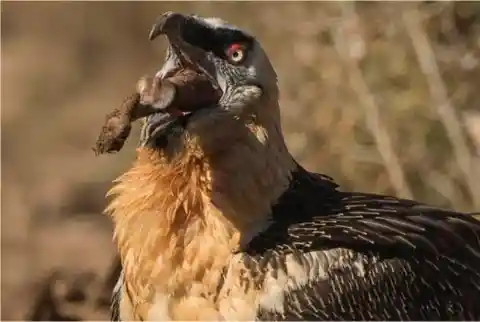
Perched high in the mountains of Eurasia and Africa, there lurks a creature so fierce and unusual, it's enough to send chills down your spine. Say hello to the bearded vulture, or as I like to call it, the bone-devouring marvel. Unlike other birds that fancy a juicy piece of meat, these feathered rebels have a different taste - they prefer dining on carcasses.
You heard that right. Instead of going for the typical protein-packed diet, these vultures are all about bones. Now, you might be wondering, what's the deal with bones? Don't they lack nutritional value? Well, yeah, they kinda do. But that doesn't stop these avian daredevils. They make up for it by devouring an astonishing amount of bone matter.
To put it into perspective, for every 100 grams of bone these vultures gobble up, they absorb a whopping 387 kilograms of protein. How, you ask? Well, it's all about that fat content. Bones may not offer much in terms of nutrients, but they do have plenty of fat. And these bearded vultures know how to milk it, quite literally.
So, next time you find yourself exploring the chilly regions of Eurasia or Africa, keep an eye out for these bone-munching beasts. They may not be your typical bird of prey, but they sure know how to make a meal out of whatever nature throws their way.
28. Gators Gone Wild: The Diver and the Deep-Sea Alligator
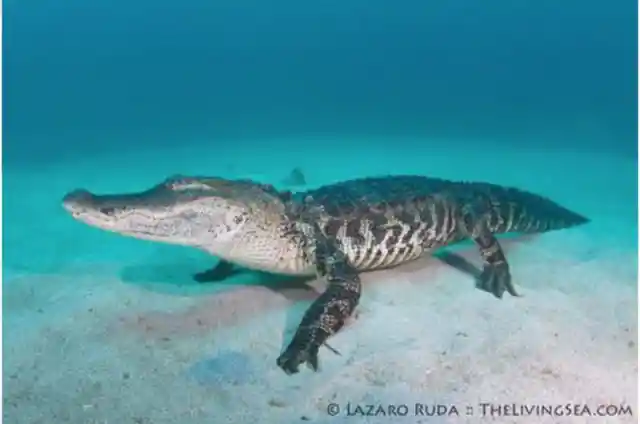
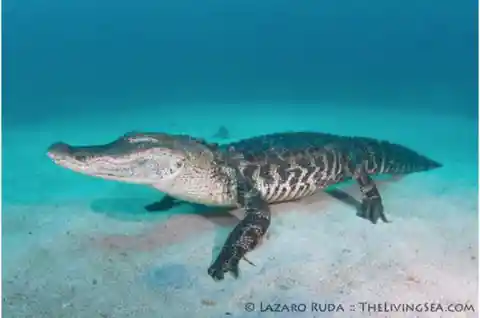
When you're out diving in the Atlantic ocean, the last thing you expect to come across is an alligator. But that's just what happened to one diver off the coast of Florida. She was doing her thing, enjoying the sights and sounds of the deep, when suddenly, out of nowhere, there it was - an alligator, chilling at a depth of 60 feet.
Now, it's not entirely unheard of to find alligators lurking in the waters of Florida. In fact, in 2022, a massive 12-foot gator made headlines after getting a little too friendly with a paddle boarder at Silver Springs State Park. But what makes this dive alligator encounter so bizarre is that it happened so far out at sea. Talk about a wild ride!
As it turns out, people feeding these apex predators may have something to do with their newfound comfort around humans. They're no longer seeing us as threats, but as snack dispensers. So, when it comes to alligators in Florida, keep your distance. Because, as local hunter, Brady Toensing, said after the dive alligator was taken out - "It was sad, but these guys are just doing their jobs. This alligator's fate was set when people decided to start feeding it."
Lesson learned? When it comes to sea monsters, just stick with the friendly ones - you know, like dolphins and sea turtles.
29. A Sticky Situation: When Jellyfish Become Deadliest Predators
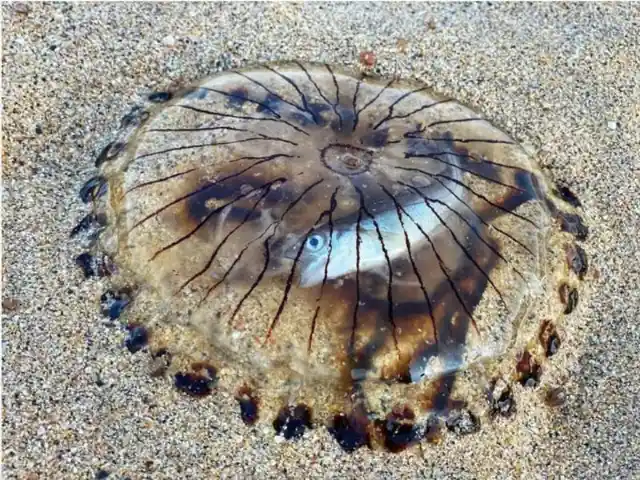
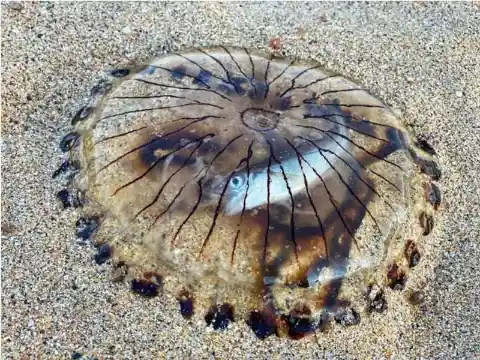
A perfectly innocent fish, minding its own business, swimming through the vast expanse of the ocean. Suddenly, it finds itself trapped inside the gelatinous prison of a compass jellyfish. Talk about a real-life horror story! The tables have turned, my friends, because this time, the predator has become the prey.
Compass jellyfish may seem harmless, gliding through the water with their majestic presence. But don't let their serene appearance fool you. These gelatinous blobs are voracious hunters, feasting on small fish, crabs, and even their own kind. And if you happen to cross their path, you better be prepared for a painful sting.
This peculiar snapshot captures a fish, completely absorbed within the dome of a compass jellyfish. It's a twisted reminder of just how wicked life in the middle of the ocean can be. While these captivating creatures are more commonly found off the Southern and Western coasts of England during the summer, stumbling upon a jellyfish death dome like this is the stuff of legends. You’d need some serious luck on your side to witness such a once-in-a-lifetime spectacle.
So, the next time you take a dip in the ocean, keep your eyes open for those gelatinous assassins. And for the fish out there, may you swim swift and sure, avoiding the clutches of these deadly jellyfish predators.
30. Beware the Beautiful Stripes: The Deadly Dofleinia Armata
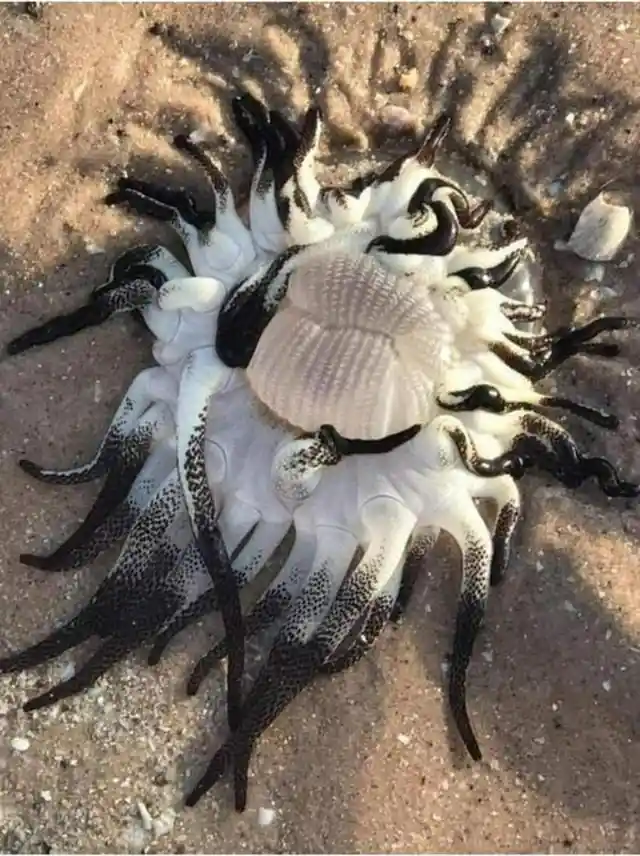
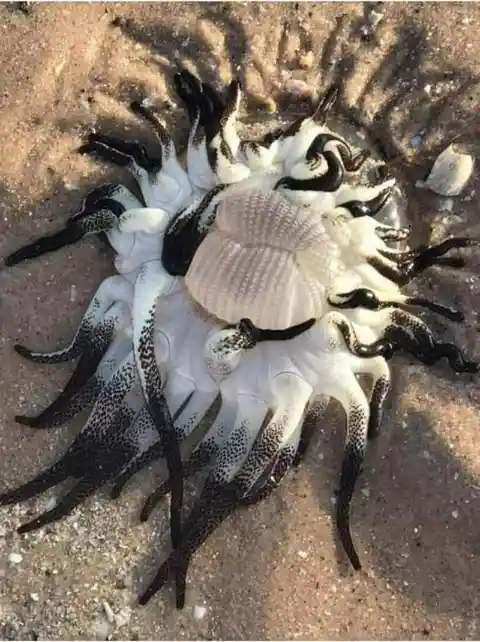
You're strolling along the picturesque shores of Broome, Western Australia, enjoying the serene beauty of the beach. Suddenly, your eyes land on a peculiar sight. A stunning creature, washed ashore by the waves, catches your attention. It's the Dofleinia Armata, a truly toxic wonder.
With its vibrant stripes and graceful tentacles, the Dofleinia Armata may seem like the epitome of beauty. But don't be fooled, my friend. Looks can be deceiving, and this alluring creature hides a painful secret. With just a single touch, it can unleash a world of hurt. Its tentacles are armed with powerful nematocysts, explosive cells that deliver excruciating stings to anyone who dares cross its path.
Sadly, most encounters between humans and Dofleinia Armata are accidental. Whether it's a misstep that leads to stepping on this fearsome predator or simply getting a little too close for comfort, the result is the same - extreme agony. The injuries caused by this beautiful yet deadly creature can take months to fully heal, leaving their victims with painful reminders of their unfortunate encounter.
So, if you're planning a trip to the southeastern hemisphere anytime soon, heed this warning: keep your eyes open and your limbs to yourself. For within the serene waters and sandy shores of Western Australia and the Philippines, the Dofleinia Armata waits silently, ready to strike and leave its victims writhing in pain.
31. Zebra vs. Crocodile: A Battle of Survival
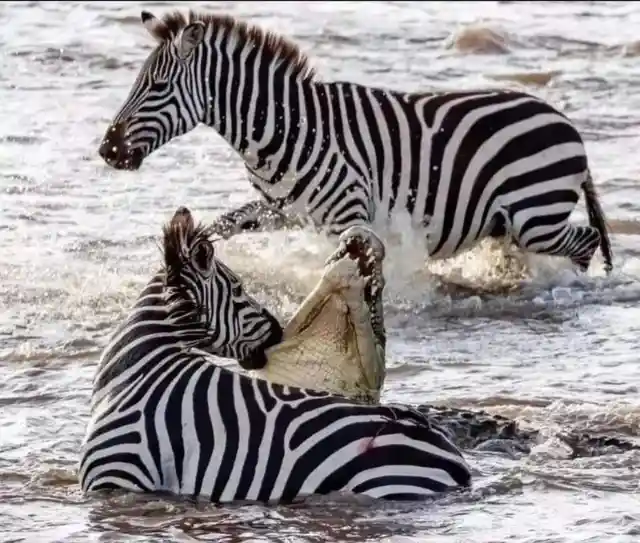
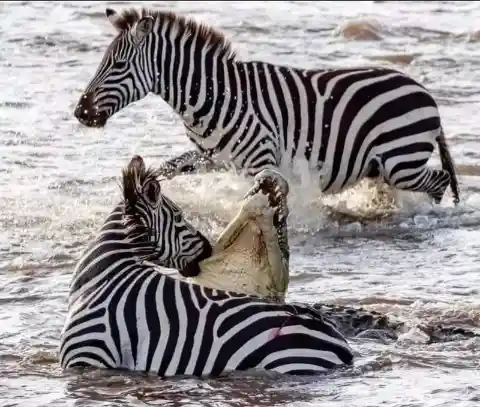
A peaceful zebra, minding its own business, grazing on the grassy plains. Suddenly, out of nowhere, a fearsome crocodile emerges with an appetite for a zebra-sized meal. Now, it's not every day you witness a zebra taking on one of these apex predators. But when push comes to shove, even a gentle herbivore like a zebra will fight tooth and hoof for its life.
Naturally, zebras aren't born predators. Their diet consists of grass, leaves, and whatever vegetation they can find. But when faced with a life-or-death situation, these seemingly peaceful creatures unleash a hidden strength. Equipped with exceptional eyesight and hearing, zebras are always on high alert. And when it's time to make a speedy getaway, they can bolt at an impressive 35 miles per hour.
In close combat, zebras have a trick up their stripey sleeves. They're notorious for delivering devastating kicks with their powerful legs, capable of inflicting serious damage. To protect their pack, the leader zebra takes charge, alerting its family to danger and ensuring their escape to safety. In the remarkable photo captured here, it seems as if the pack leader was ready to teach the audacious crocodile a lesson in the art of reading between the lines.
Witnessing such an intense showdown between these two formidable creatures is a rare spectacle, showcasing the indomitable spirit of the animal kingdom. So, the next time you spot a zebra on the savannah, remember that beneath their peaceful exterior lies a heart filled with courage and a will to fight against all odds.
32. Trapped in the Snow: The Haunting Tale of the Donner Party


Think of tanding on Donner Summit in California, with Interstate 80 closed for 15 miles in either direction. The reason? Mother Nature's wrath. Six inches of relentless rain was abruptly followed by a staggering 25 inches of heavy snow. It's a scene reminiscent of the conditions faced by the ill-fated Donner Party back in 1846.
Picture this: a group of brave pioneers, journeying from the Midwest in their trusty wagon train, bound for the promise of the West. Little did they know that their path would lead them into a treacherous snowbound nightmare in the Sierra Nevada mountain range. That fateful winter of 1846 would forever be etched in history.
As you gaze at this photo, the sheer amount of snow gives you a glimpse into the unimaginable hardships endured by the Donner Party. Yet, unlike today, they had no modern comforts to keep them warm or entertained. Trapped in the clutches of winter's icy grip, their fate was sealed with tragedy. Of the original 87 members of the party, only 48 would emerge from the relentless snow-covered landscape.
The survivors carried with them the chilling memories of their fallen comrades. In 1927, a somber tribute was erected, known as the Donner Memorial State Park. Its purpose? To honor the memory of those who endured unimaginable hardships, marking the spot where their harrowing tale came to a sorrowful end.
So, as you stand on Donner Summit, engulfed by the ghostly silence of the mountains, take a moment to reflect upon the remarkable resilience of the human spirit. The haunting saga of the Donner Party serves as a poignant reminder of the indomitable nature of the human will, even in the face of nature's most relentless wrath.
33. Blind Hunters: Secrets of the Ganges River Dolphin
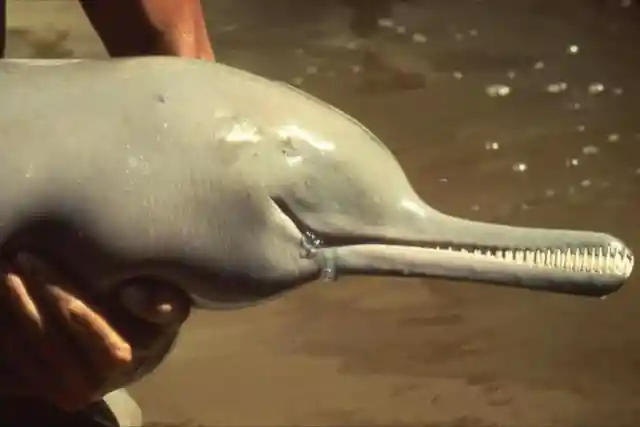
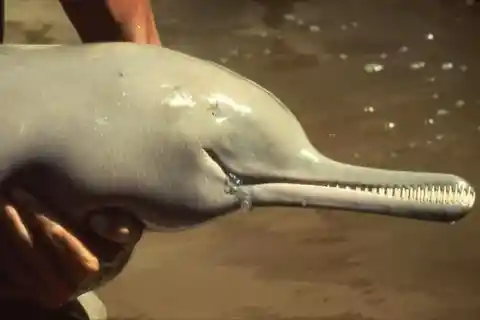
In the murky depths of the Ganges River, a fascinating creature thrives in darkness. Meet the Ganges river dolphin, equipped with eyes that are nothing more than small, virtually useless orbs. But don't let their impaired vision deceive you, for these incredible creatures have evolved a remarkable hunting strategy.
Picture this: the Ganges river dolphin, navigating the freshwater rivers of the Eastern Himalayas. Blind, yet armed with a special skill – they emit ultrasonic sounds that travel through the water, bouncing off their prey and allowing them to create a unique stereo image. It's an ingenious way to navigate and catch their next meal. First discovered in 1801, these dolphins are now on the verge of extinction in their native habitats in Nepal and India.
The dwindling numbers of Ganges river dolphins can be attributed to various factors. Both hunting and the reproductive habits of these amazing creatures play a role. Females only give birth to one calf every two or three years, slowing down their population growth. Despite the challenges they face, these ancient beings can reach an impressive length of up to nine feet and weigh a staggering 374 pounds. However, the dolphin captured in this photo seems to be a young calf, far from its full-grown potential.
The enigmatic world of the Ganges river dolphin holds countless wonders, showcasing the resilience of nature's creations. As these remarkable creatures continue to fight for survival, it is our duty to cherish and protect their fragile existence.
34. From Caterpillar to Moth: The Intriguing Tale of the Lobster Moth Caterpillar
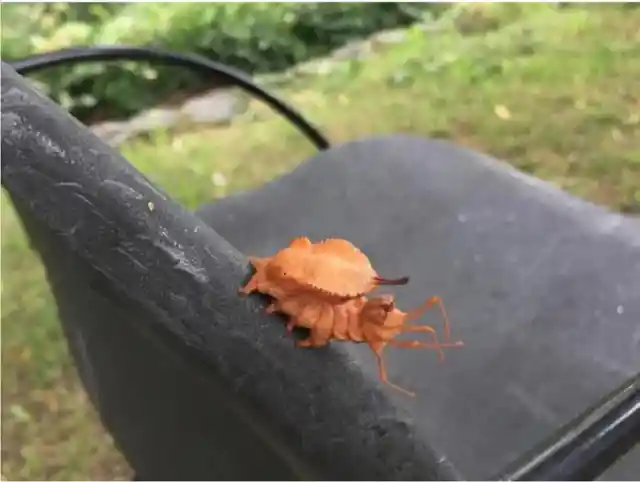
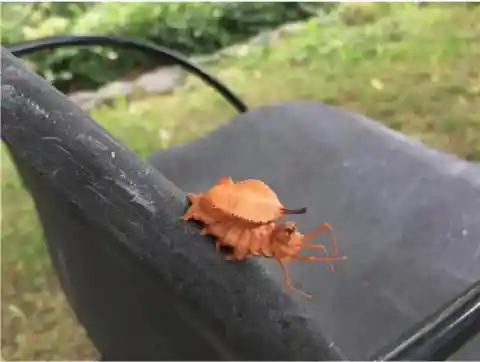
Looking at the Dutch Lobster Moth Caterpillar, one could easily mistake it for an alien life form. But it isn't! This fascinating creature has earned its unusual name from its appearance, specifically the "lobster prominent" on its body. It's been described as the worst Pictionary clue, but in reality, it's a reference to one of nature's most creative designs.
First discovered by Carl Linnaeus in the 10th edition of Systema Naturae, this little caterpillar holds the potential to transform into a fuzzy moth. Found exclusively in the Palearctic realm (the northern half of the eastern hemisphere), Lobster Moth Caterpillars are actually more like spiders or ants. During their growth cycle, they even consume their own shells, undergoing a transformation that sees them develop long, thin legs and claspers while taking on a bright red hue that resembles their crustacean namesake.
When it's time to build a cocoon, the larvae settles in between May and July before emerging as an entirely different creature – a moth, with wings ready to take flight. But before metamorphosis, this tiny lobster decided to show off its striking appearance, boasting its unusual look that captures the imagination of scientists and entomologists worldwide.
In nature, the most bizarre creatures are often the most alluring. And the lonesome Lobster Moth Caterpillar holds a special place in our hearts, teaching us to admire the power of transformation and revel in the awe-inspiring beauty of the world around us.
35. The Mystery of the Indian Monitor Lizard: A Connection to the Dinosaurs

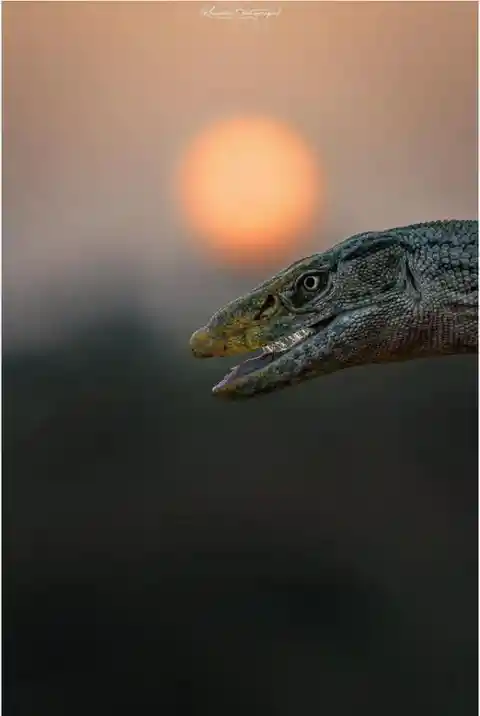
While exploring the fascinating world of monitor lizards in the animal kingdom, one species stands out for its eerie similarity to a dinosaur. Meet the monitor lizard native to India. This majestic reptile's appearance and unique abilities make it hard to tell them and dinosaurs apart.
With their distinct reptilian features and unusual abilities, monitor lizards are intriguing creatures. The Indian monitor lizard, in particular, raises an interesting point about their physiology. One factor that makes them very similar to dinosaurs is their breathing – or to be precise, "one-way airflow." It's an ability birds have employed for millions of years to extract higher levels of oxygen from the air they breathe. But monitor lizards also use this advantage to breathe in a unique way that sets them apart from most other reptiles.
Scientifically speaking, this one-way airflow is known to have originated about 270 million years ago in diapsids, the cold-blooded creatures that included dinosaurs. It's incredible to think that monitor lizards possess this ability, which acts as a defining link to their prehistoric counterparts.
The Indian monitor lizard proves that there's much more to the animal kingdom than meets the eye, and that even creatures we thought we knew well are still shrouded in mysteries waiting to be uncovered.
36. The Mystery of the Orange Cave Dwarf Crocodile: Are they Evolving Into a New Species?

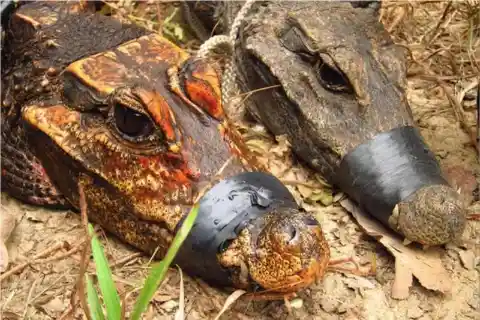
It isn't often that we have the chance to witness the evolutionary process in action. However, scientists in Gabon have been closely studying the Orange Cave Dwarf Crocodile. What they've discovered is nothing short of mind boggling.
On the surface, orange and dwarf crocodiles may look the same, but the orange ones have unique genetic traits that separate them from their kind. These crocodiles evolved in an unusual way due to their location - their habitats have a higher level of acidity because of nearby deposits of bat guano. This has caused their skin to take on an orange hue as they adapt to survive in this environment.
But the evolutionary differences run deeper. Researchers have performed DNA testing on the orange and standard cave dwarf crocodiles and found something unique - the orange dwarfs are passing a one-of-a-kind haplotype onto their young. This discovery highlights the possibility that the orange crocodiles may be evolving into a new species and mark a captivating moment in the history of scientific discovery.
The orange dwarf crocodile has proven to be a striking example of the ongoing evolution in nature, showing us once again that the beauty of scientific discovery can be found in the most unexpected of places.
37. The Tale of the Caiman's Weird Little Tail: A Marvel of Regrowth
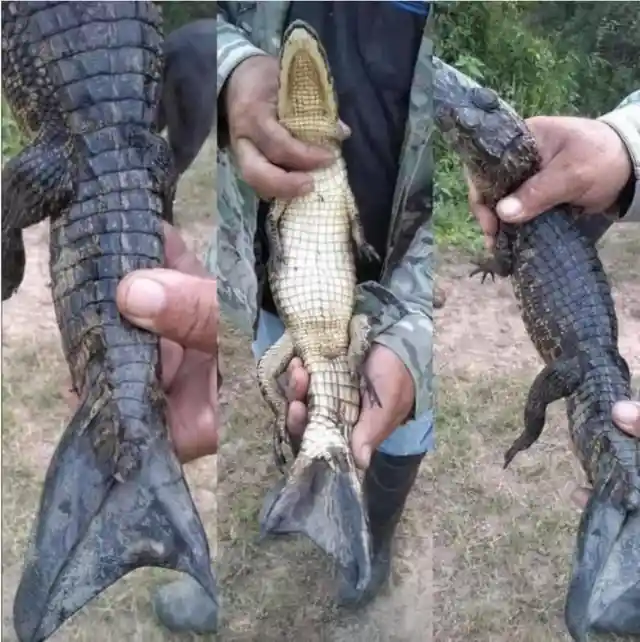
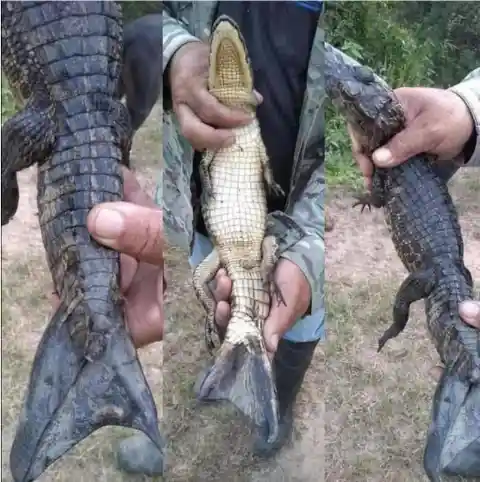
Once upon a time, there was a caiman sporting a rather unusual tail. But don't be alarmed, my friends, for this wasn't some strange quirk of nature. It was a testament to a remarkable ability - the power to regrow a limb. Yes, you heard it right!
We often associate the regrowth of limbs with small lizards, like geckos. But who would have thought that caimans and alligators possess the same extraordinary superpower? Well, the truth is that the ability to regrow a tail becomes a bit trickier when you're as big as an alligator. It's not as simple for these magnificent creatures to restore a full-grown tail.
However, as luck would have it, juvenile alligators discovered the secret to regrowth. They can grow back their tails up to a length of nine inches, which is an impressive 18 percent of their entire body length. Of course, this miraculous process does come with certain limitations.
Cindy Xu, a brilliant biologist at Arizona State University, conducted research on reptiles and uncovered some fascinating insights. She explained that the regrowth of skeletal muscle in alligators didn't occur. It turns out that the regrowth process is incredibly energy-intensive. When alligators pour all their energy into perfecting the regrowth of a structure, it comes at the expense of other essential processes, such as their developmental growth.
The tale of the caiman's weird little tail reminds us of the incredible wonders of nature. It shows us that even among mighty creatures like alligators, the power of regrowth exists, albeit with its own enchantingly complex intricacies.
38. The Unusual Event of a Catfish Eating an Armadillo: Myth or Reality?
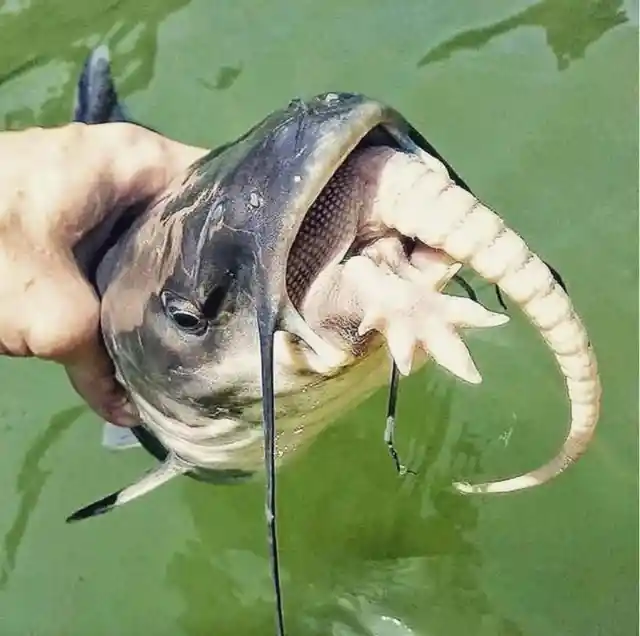
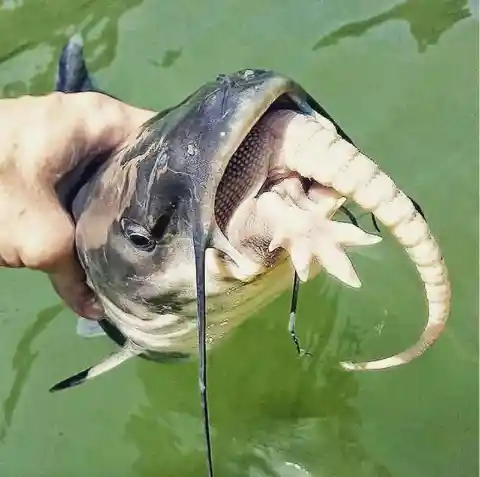
What would you say if someone showed you a picture of a catfish eating an armadillo? You might be shocked, you might be disgusted, but one thing is for sure, it's not something that you'd see every day! But as it turns out, the truth is not quite that simple, my friends.
As we know, catfish are not known to jump out of the water and swallow their prey whole. What they are recognized for is their large appetites. They love munching on whatever falls to the bottom of their watery kingdom, be it small fish or insects.
So, how can we explain this strange event of a catfish eating an armadillo? There are two possibilities - either the armadillo fell into the pond and drowned, or it was already dead and found its way into the water. The former is the more probable of the two, as armadillos become as tough as bullet-proof skeletons when they pass away.
The picture of a catfish having an armadillo for lunch may seem outrageous, yet things like this happen in the circle of life. As we ponder over this, let's remember that the world is full of astonishing events and encounters, both strange and beautiful, just waiting for us to explore and embrace.
39. The Epic Battle of the Centipede and the Snake: A Legend in the Animal Kingdom
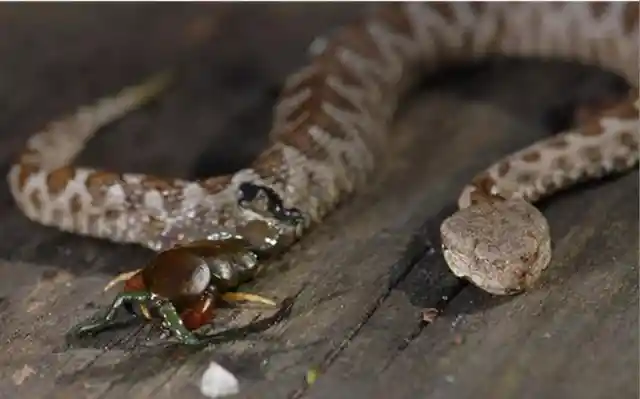
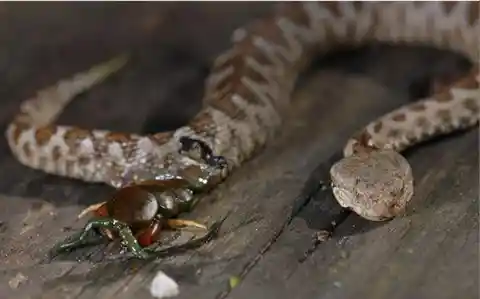
Legend has it that in the vast depths of the animal kingdom, there exists an incredible story of survival against all odds. The photo captured in all its gory glory is evidence enough that even when you find yourself in the belly of a snake, the fight is far from over.
Now, it's not uncommon for a viper, like the one depicted in the photo, to feast on a centipede. However, these snakes typically have a preference for smaller mammals and lizards. But this particular centipede proved to be no ordinary prey. It put up a ferocious fight, surprising the snake beyond belief.
You see, my friends, this invertebrate, known as the Scolopendra, is notorious for its incredible toughness. Killing a full-grown Scolopendra is no easy feat. So, here comes the twist in our tale - it seems that the snake made the grave mistake of swallowing the centipede alive. And in a twist of fate, the prey fought its way through the snake's stomach, inching ever closer to its anticipated freedom.
In the grand tapestry of nature, unimaginable encounters like this remind us that the animal kingdom is filled with awe-inspiring stories of survival and resilience. Even in the darkest of situations, the will to live and overcome can lead to astonishing triumphs.
40. The Unbelievable Survival of the Gliding Tree Frog: A Spine-Tingling Encounter
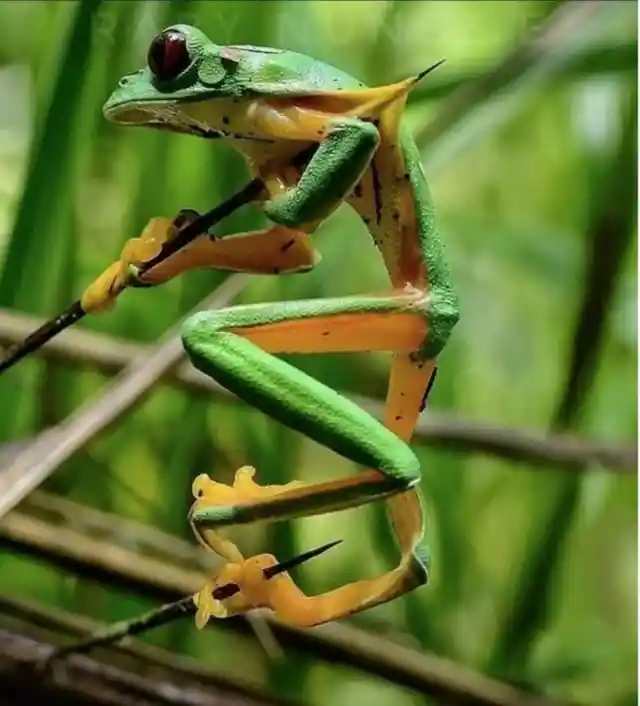
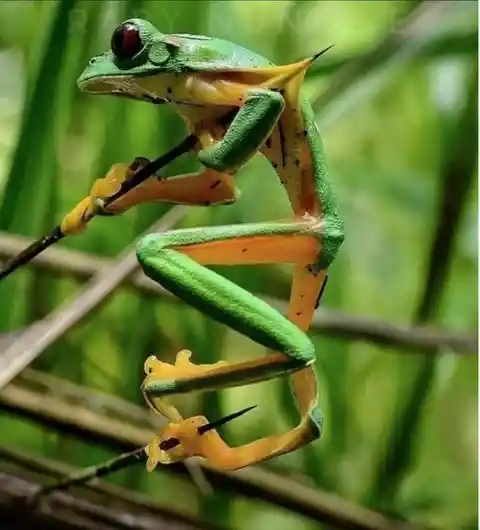
In the magical world of nature, there are moments that leave us awestruck. One such incredible moment was captured by Raby Núñez E, a talented Costa Rican photographer and naturalist guide. Brace yourselves for a jaw-dropping shot of a gliding leaf frog, seemingly meeting its tragic end, as it impales itself on the sharp spine of a palm tree. But wait, my friends, there's more to this story than meets the eye.
Contrary to appearances, this resilient creature managed to survive this harrowing ordeal. Núñez E, explaining the extraordinary image, enlightened us with the fascinating details. He revealed that the photo was snapped in Sierpe, a place surrounded by the vibrant canvas of nature. Imagine a picturesque lagoon, replenished by the life-giving rainwater, acting as the breeding ground for these remarkable frogs. Thousands of them gather in a phenomenon known as explosive reproduction.
These gliding tree frogs, experts in the art of leaping from treetops, soar gracefully towards the vegetation surrounding the lagoon. It's a sight to behold! However, amidst this intense competition for mates, a few unfortunate souls end up entangled in the unforgiving thorns of the palm trees. In this particular event, two or three of these brave frogs found themselves impaled on the palm tree's spine.
The stunning survival of this gliding tree frog teaches us a valuable lesson about the indomitable spirit of nature. Against all odds, it triumphs, reminding us that resilience and the will to survive can lead to incredible stories that astound and inspire us all.
41. The Circle of Life: A Dragonfly's Lunchtime Delight
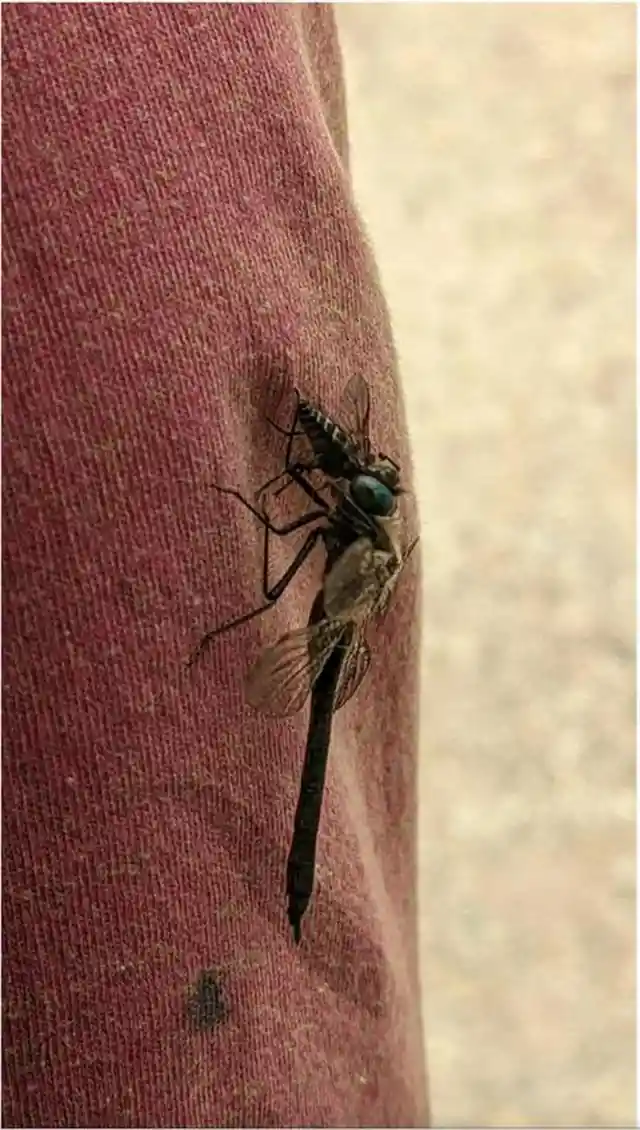
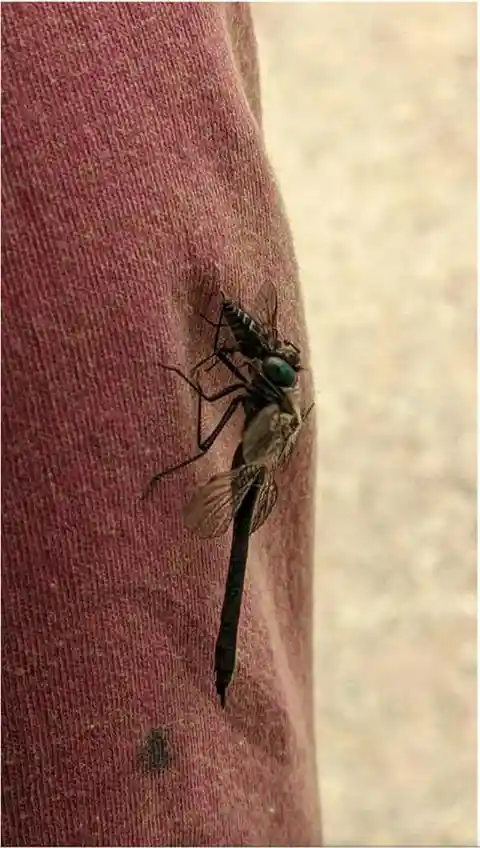
Hold on tight to your meals, folks, for this story is not for the faint of heart. Brace yourselves to witness one of nature's incredible wonders, as we capture the moment when the hunter becomes the hunted.
It all started innocently enough, when a harmless horsefly decided to chomp on this poor fellow's arm. But before the man could swat it away, an unexpected hero swooped in - a dragonfly! Now, we all know that dragonflies need to eat other insects to survive. But to witness this primal instinct in action is a sight that leaves us with mixed emotions.
You see, dragonflies need to consume up to fifteen percent of their own body weight every day, and their diet primarily consists of mosquitoes and flies. So, it's not much of a surprise when we see these beautiful creatures effortlessly hunt down their unsuspecting prey.
But have you ever wondered what it would be like to witness this incredible sight in person? Can you imagine seeing a dragonfly devouring its meal, right in front of your eyes? It's a sight that is both awe-inspiring and a little gross.
So, the next time you're out and about, and you see a dragonfly buzzing around, remember that it's all a part of the circle of life. And if you're curious enough to watch the action unfold, you can always head over to YouTube. But be warned; it's not for the faint-hearted!
42. Break-In at the Pantry: A Snake's Scrumptious Surprise
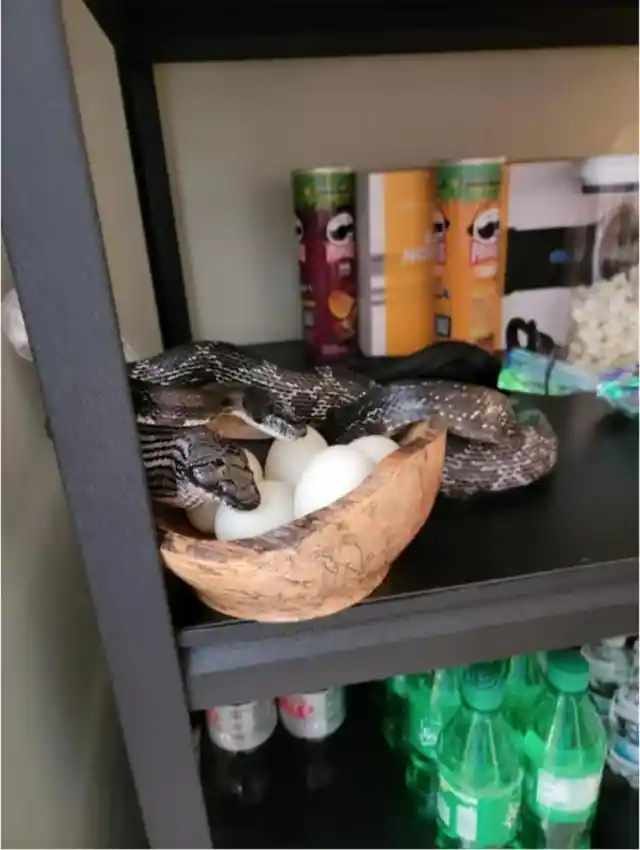
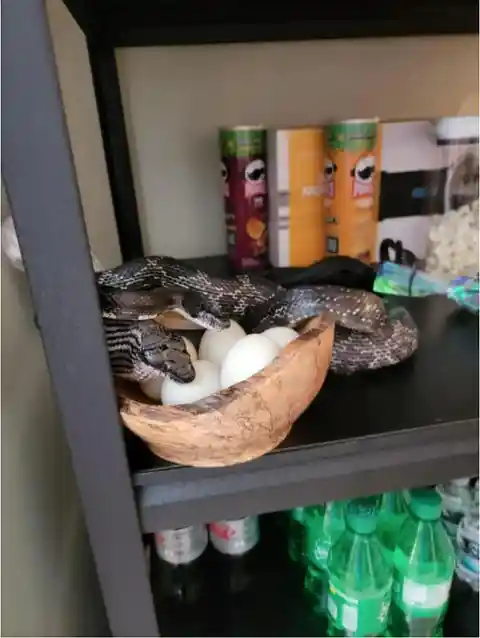
In a chilling tale that will make your skin crawl, we delve into the unsettling encounter of Reddit user u/Rezenebe. Picture this, my friends: as the sun rose, they innocently walked into their pantry, only to stumble upon a horrifying scene. Right there, in the heart of their precious sanctuary, a slithery serpent was feasting shamelessly on their stash of beloved duck eggs. It's the stuff of nightmares, my friends.
Snakes, you see, may have poor eyesight, but they more than make up for it with their exceptional sense of smell. Once they catch wind of something enticing, there's no stopping them. And in this case, the alluring aroma of those duck eggs proved irresistible to our sneaky thief.
Curiosity soon led us to uncover the bizarre explanation behind this snake's pantry raid. The unsuspecting victim shed light on the snake's unexpected entry point into their once-safe haven. As luck would have it, a bathroom had undergone a transformation into this very pantry, leaving behind tiny openings in the sheetrock from the sink plumbing. Cunning as they are, these cunning reptiles slithered through the crawl space, up the wall, and made themselves right at home in the pantry. Talk about being cheeky trespassers!
To add another twist to this chilling tale, it seems that this bold infiltrator was not alone. Our fearless pantry explorer discovered that one snake had already indulged in a stolen egg, while its partner seemed to have a peculiar agenda - potential mating, perhaps? Oh, the audacity!
Now, my dear readers, let this nerve-racking tale serve as a reminder to secure your sanctuaries and keep a keen eye out for unexpected visitors. For you never know when a sly snake might just slither its way to your pantry, leaving you with a spine-tingling story to tell.
43. Nature's Cruel Reality: The Snack-Time Snare
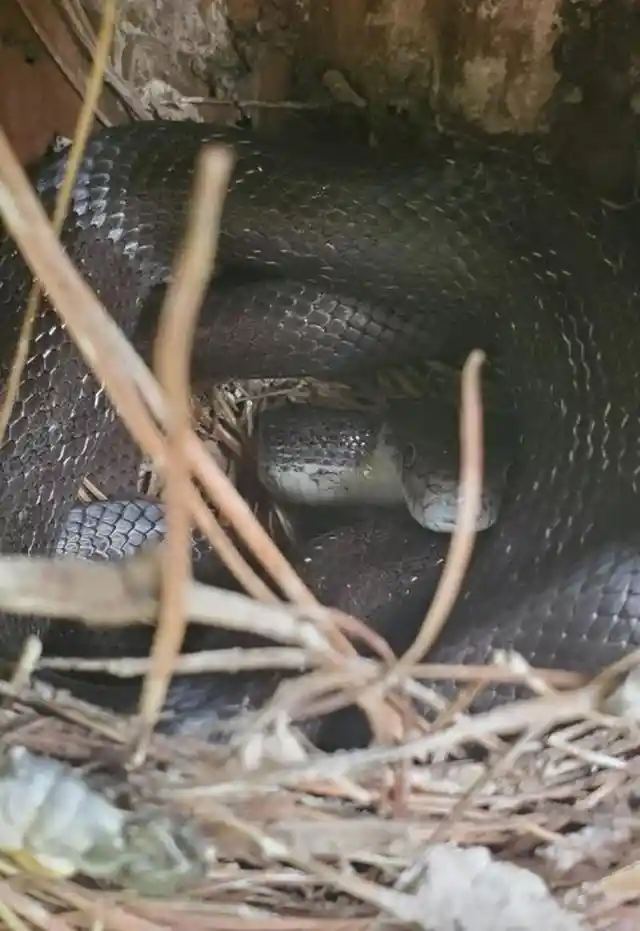
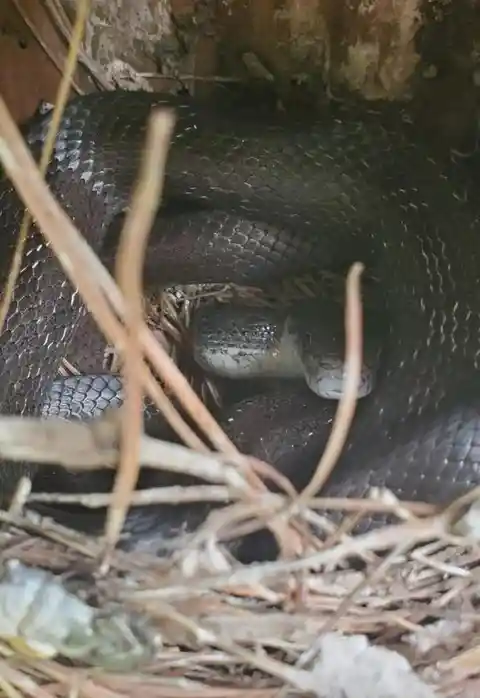
Listen closely, dear readers, for we are about to unfold a tale that serves as a cautionary reminder about the duality of good intentions. Brace yourselves as we delve into the shocking encounter caught on camera – a snake's unexpected feast on a re-nested bird. Prepare to have your senses rattled.
Sometimes, in our human desire to extend a helping hand to our animal friends, we unknowingly set the stage for disastrous outcomes. This image serves as a stark reminder of that bitter truth. At first glance, it's easy to view our actions as noble and kind-hearted. Yet, we may inadvertently disrupt the delicate balance of the ecosystem, unwittingly creating a haven that predators can navigate with ease, much like a ravenous customer in a bustling bodega.
When this jaw-dropping photo emerged on the online realm of Reddit, viewers were left in a state of disbelief. Not only were they taken aback by the snake's predatory act, but also by the poster's genuine surprise. After all, saving a bird and returning it to its nest seemed like a virtuous deed. In truth, they hadn't done anything wrong. In fact, their efforts mirrored what most of us would have done in such a situation. Alas, sometimes the harsh realities of the animal kingdom prevail, and the outcome is as unforgiving as it is inevitable.
And so, dear readers, let this be a solemn reminder that nature is a realm where even the best of intentions can fall victim to the relentless cycle of life and death. It's a world where predator and prey dance on the edge of our understanding, challenging our perception of what it means to lend a helping hand. As we navigate this intricate tapestry of existence, tread carefully, for the line between kindness and peril is often thinner than we can imagine.
44. Secrets of the Armadillo's Exoskeleton: A Skeleton Within a Skeleton
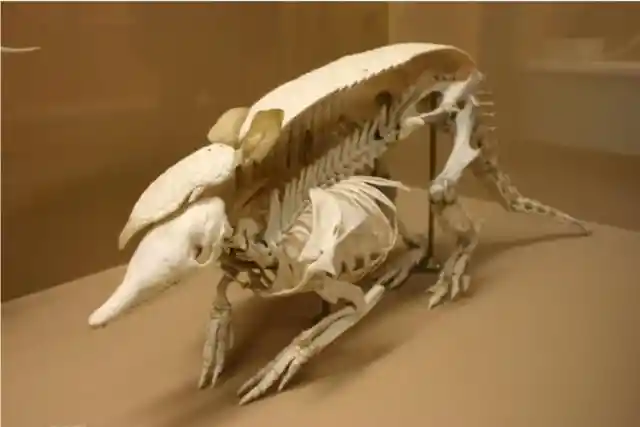

Prepare to embark on a journey into the realm of oddity and wonder as we unravel the mysteries of the armadillo. These peculiar creatures, my friends, are not to be underestimated. With their evolutionary prowess and unconventional appearance, they stand as testament to nature's remarkable adaptations. Brace yourselves, for we are about to delve into the mesmerizing world of armadillo skeletons.
At first glance, their skeletons may appear as if two armadillos have intertwined to create a skeletal masterpiece. Oh, the marvels of nature! Yet, there's more to this spectacle than meets the eye. You see, the top layer of the armadillo's skeleton is not just a duplicate of its lower counterpart. No, sir! It is, in fact, a unique structure known as a carapace – a collection of countless tiny bones intricately woven together.
Picture this: beneath the armadillo's skin, this incredible carapace steadily grows, aiding these small creatures in their quest for survival in harsh, unforgiving terrains teeming with predators. Unlike their reptilian counterparts, the turtles, whose shells fuse entirely to their bones and ribs, armadillos possess an exoskeleton that remains separate from their inner skeletal framework. It's a defining feature that sets them apart and showcases the ingenuity of evolution.
So, my curious companions, let this revelation leave you astounded by the armadillo's whimsical secret. Within each of these armored creatures lies a tale of adaptation and resilience. They are the living embodiment of nature's intricacies, a testament to the astonishing diversity of life on this wondrous planet we call home.
45. The Beast of the Ocean: Kelp Unleashed
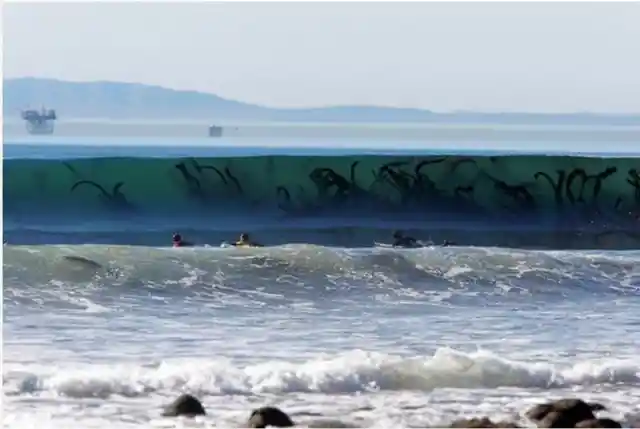

Imagine, if you will, a monstrous creature looming in the depths of the ocean, its tentacles engulfing the crashing waves. But hold your breath, dear readers, for what you see is not a sea monster lurking in the shadows. No, it is something far less menacing, yet equally bothersome: kelp – massive quantities of it, suffocating the water, making it nearly impossible for people to swim.
Now, you may be pondering the connection between this seemingly innocent kelp and the tumultuous waves. Well, my curious companions, let me shed some light on this curious correlation. Research conducted in both 2012 and 2016 has revealed a fascinating link between areas abundant in kelp and those teeming with waves. It turns out, the more waves, the more kelp you'll find.
You see, the roots of this relationship lie in the deep reaches of the ocean floor. As the mighty waves relentlessly crash upon these aquatic realms, they stir up the buried treasures beneath – and by treasures, I mean sea vegetation, particularly kelp. The waves, with their deep penetration, expose vast quantities of kelp, rendering it free to dance upon the restless waters above. It is this curious dance between the waves and the kelp that blankets certain areas with its eerie presence.
But fear not, dear readers, for there is a glimmer of hope. In the shallower waters, where the waves lose their vigor, their power to dredge up copious amounts of kelp diminishes, resulting in a lower density of this slimy spectacle.
And there you have it, a tale of the unholy alliance between waves and kelp, unveiling the mysteries of their symbiotic existence. The ocean, my friends, is a treasure trove of strange surprises, where even the most innocuous seaweed can take on the appearance of a fearsome monster.
46. Love and Cannibalism: The Bizarre World of Grasshopper Mating
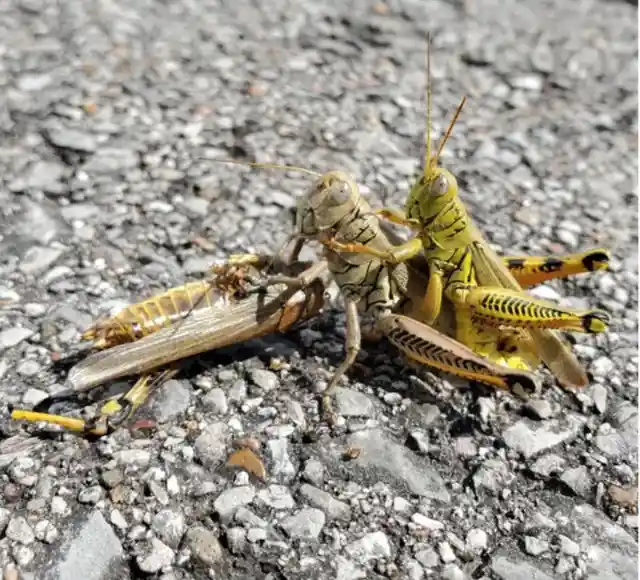
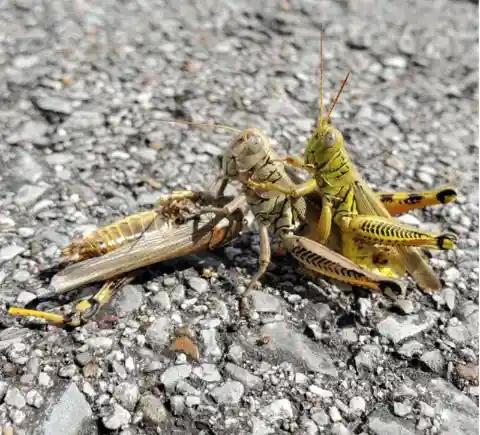
Once upon a time, in the deep realms of nature's peculiar ways, a male grasshopper found himself engaged in an extraordinary encounter. Picture this, my friends: amidst a backdrop of grassy fields, our unsuspecting hero met a female grasshopper. It seemed like a typical romantic encounter, but hold your disbelief, for this tale takes an unimaginably twisted turn.
As the male pursued his amorous intentions, his paramour exhibited an appetite not just for passion, but for something far more unsettling. Brace yourselves, dear readers, for she resorted to cannibalism. Yes, you heard that right. While engaging in the act of mating, the female decided to make a quick snack out of a third grasshopper, an unsuspecting victim caught in the crossfire of this primal love triangle.
Our story doesn't end there, for even back in the year of 1858, in the heartland of Texas, the peculiar behavior of grasshoppers did not go unnoticed. The local news outlet, The Gonzales Inquirer, found itself in the midst of reporting on a truly grotesque phenomenon. Grasshoppers, after ravaging the vegetation, turned their insatiable appetites towards each other. It was as if a cannibalistic frenzy had descended upon them. The article chillingly remarked, "the grasshoppers, having about completed the work of destruction... have, cannibal-like, fallen to work devouring each other."
As repulsive as it may seem, this bizarre dance between love and cannibalism continued, with the grasshoppers meeting their untimely demise, surrounded by their living counterparts eagerly feasting upon them.
And there you have it, a truly grotesque yet fascinating glimpse into the secret world of grasshopper mating. Nature's ways may sometimes leave us baffled, but they never cease to amaze with their audacity and shocking twists.
47. Mama's Watchful Eye: A Polar Bear's Fierce Love
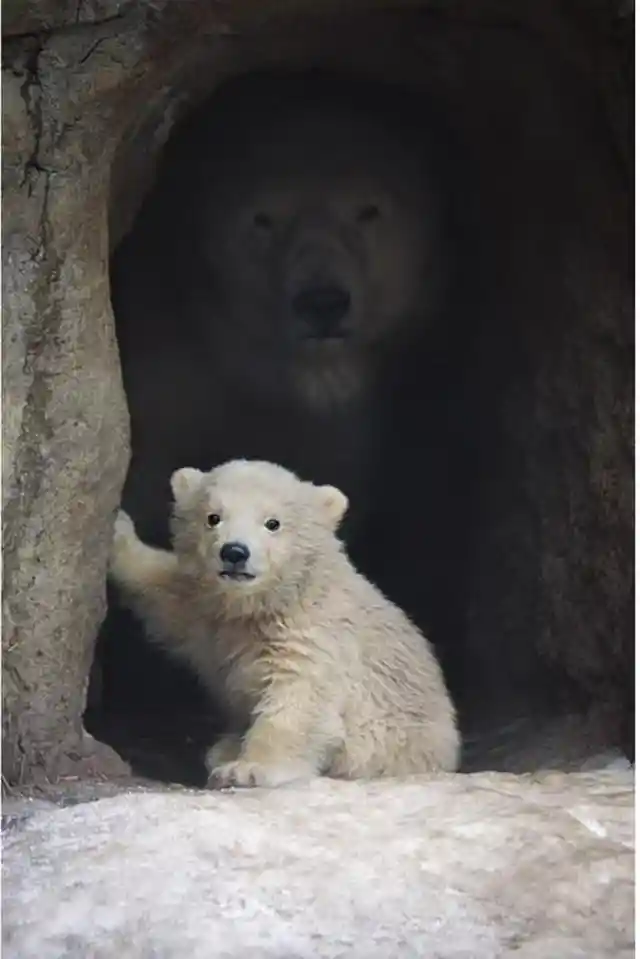
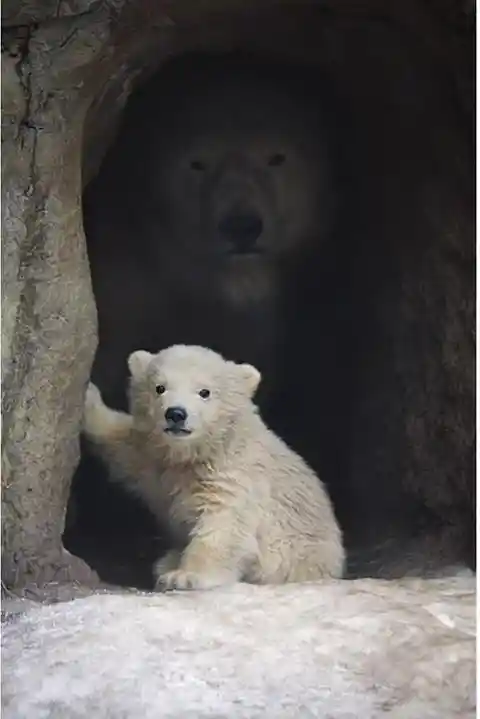
Imagine you're wandering through the icy expanse of the Arctic, your breath forming frosty clouds in the frigid air. Suddenly, you come face to face with a sight that leaves you torn between awe and fear. There, before your very eyes, stands a polar bear and her precious cub. Cute or terrifying? Well, that depends on your vantage point.
Now, let me tell you a little something about mother polar bears. These majestic creatures are fiercely protective, fiercely devoted to their young. They watch over their cubs with an intensity that is nothing short of astonishing. You see, dear readers, these mothers rarely let their little ones out of their sight. They'll even go paw to paw with male bears if they sense a threat, which is not a tango you want to be a part of!
But here's where their maternal instincts truly astonish us. Even in the face of tragedy, a mother polar bear's devotion does not falter. Should one of her cubs meet an unfortunate fate, she will keep a watchful eye over the lifeless body, protecting it even if there's danger in the vicinity. This unwavering commitment to their offspring speaks volumes about the depths of a mother's love in the Arctic wilderness.
So, if you ever find yourself amidst the frozen embrace of a polar bear and her cub, tread lightly, my friends. Approaching them recklessly would be like teasing fate itself. You would find yourself facing the wrath of those powerful claws, and that's a predicament best avoided.
And there you have it, a glimpse into the world of a protective polar bear mother and her cub. A tale of unyielding love, fierce determination, and an innate understanding that family always comes first in the harsh realm of the Arctic.
48. The Tree Tag-Team: When One Tree Saves Another


Imagine stumbling upon a peculiar sight in the heart of a forest. Two trees, seemingly locked in a battle for survival, yet strangely intertwined. How is it possible for a tree to keep another tree alive, you may ask? Well, my curious readers, hold onto your hats because this story will blow your mind.
In the wild world of nature, sometimes you witness truly extraordinary alliances. One such peculiar phenomenon is the organic buddy system where a struggling tree finds solace in the roots of its neighbor. Picture this: a dying stump, desperate for nutrients, latches onto the roots of a neighboring tree and forms an incredible bond before it breathes its last breath.
You see, dear readers, these unlikely partners in survival engage in an incredible act of grafting. It's as if the dying stump refuses to accept its fate and clings to life, finding sustenance and support from the roots of a stronger companion. This fascinating dance of coexistence challenges our perception of the competitive nature of the natural world.
Ray Callaway, an esteemed ecologist, was amazed by this astonishing discovery. He remarked, "This is good evidence that a lot of individual organisms that we perceive of as working in a competitive manner actually interact in a far more complicated dance." And indeed, it seems that Mother Nature has a way of weaving intricate relationships between organisms that are far beyond our comprehension.
So, my friends, the next time you venture into the wilderness, keep an eye out for these unexpected examples of tree teamwork. Witness firsthand the awe-inspiring resilience and interconnectedness that exists even in the most unlikely of places.
And there you have it, a glimpse into the story of one tree keeping another alive, a tale of survival, unity, and the remarkable bonds that bind us all in the magical realm of nature.
49. The Escape Artist: A Prehistoric Parasite's Amber Adventure
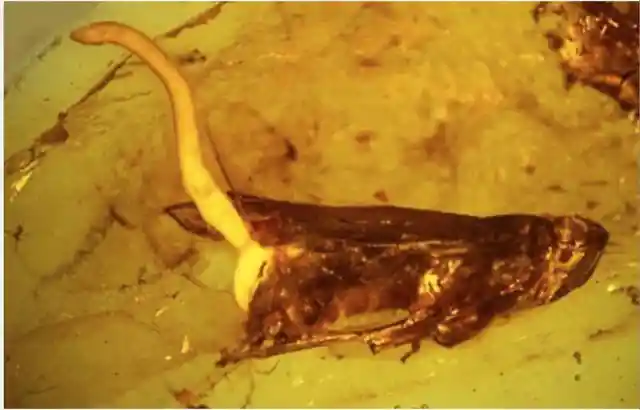

Imagine traveling back in time, my curious friends, to an era long gone, to a world teeming with creatures that have long since vanished. In this ancient realm, where giant megafauna roamed and the air was thick with mystery, we find ourselves captivated by a peculiar sight. Behold, a prehistoric parasite attempting to break free from its sticky amber prison, as if desperately gasping for air.
Now, this may just seem like an unlucky parasite caught in an unfortunate situation, but let me tell you, there's much more to this story than meets the eye. You see, artifacts like this offer us a precious glimpse into the past, acting as microscopic time capsules that take us back to a world that no longer exists. They hold the key, dear readers, to unlocking the secrets of ancient times through the scientific art of detective work.
These prehistoric parasites, trapped in amber, are not merely fascinating curiosities. They serve as invaluable specimens for scientists and researchers to study the evolution of ancient insects. Just imagine, in 2017, a team of paleontologists stumbled upon a hidden treasure. Within a piece of hardened tree resin, attached to an ancient feather, they discovered a formidable parasite, so unique that they christened it "Deinocroton draculi" - or as they affectionately called it, "Dracula's terrible tick."
With each new discovery like this, we unravel a little more of the mysteries that lie deep within the annals of time. These ancient parasites reveal insights into the past, shedding light on the evolution and intricate interplay between ancient organisms that once roamed the Earth.
So, my adventurous souls, the next time you come across an amber gem containing a prehistoric parasite, remember the story it has to tell. It's a tale of scientific wonder, ancient insects, and the invaluable discoveries that await those who dare to look beyond the surface.
And there you have it, the epic escape of a prehistoric parasite from its amber prison, a story that transports us to a time long forgotten, and a testament to the incredible power of scientific exploration.
50. Survival of the Snack: A Seal's Feast on a Sunfish
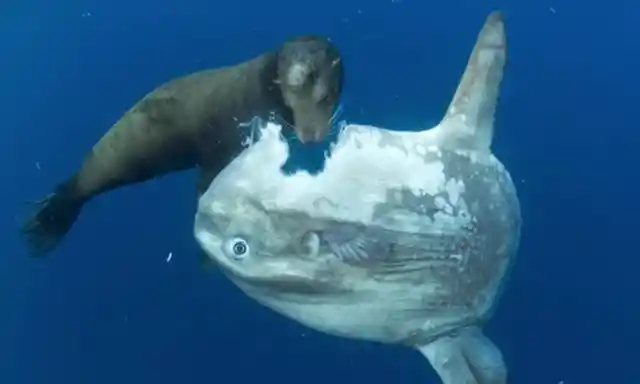
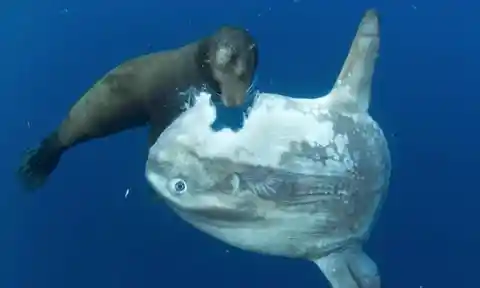
Picture this, my fellow adventure seekers - we find ourselves cruising along the coast of San Diego, cameras at the ready, hoping to capture a glimpse of the ocean's majestic inhabitants. Little did we know, we were about to witness a spectacle that would send shivers down our spines.
Suddenly, the calm waters were disturbed by an unruly commotion. Our lenses focused on the scene as we beheld a seal sinking its teeth into a hapless sunfish. Ouch, that's gotta hurt! Photographer Ralph Pace couldn't resist capturing this heart-stopping moment, and boy, did he deliver a set of photos that would leave you on the edge of your seat.
You see, my friends, we often perceive seals as the funny clowns of the sea, with their playful antics and charming charisma. But let me tell you, beneath that adorable facade lies a predator in disguise. Seals, when hunger strikes, become the ocean's formidable hunters, posing a menacing threat to any fish that dares to cross their path.
In a conversation with Earth Touch News, Pace recounted the intensity of the encounter. He recalls being lured in by the chaotic display of aquatic violence, his camera poised and ready. "We saw the sea lion thrashing around, and as we got closer, we saw the fins," Pace exclaims. As we cautiously slipped into the water, we made sure to keep a safe distance, observing with awe as this epic showdown unfolded before our eyes. But, to our surprise, the sea lion seemed to welcome our presence, almost inviting us to witness this extraordinary event, even bringing the mesmerizing sunfish closer for all to see.
In that moment, my fellow adventurers, we witnessed the raw power of nature at its most primal. We glimpsed the delicate balance between predator and prey, a spectacle that left us humbled by the wonders that lie beneath the ocean's surface.
So, my daring companions, the next time you encounter a seal in the wild, remember their true nature - a creature embodying both grace and savagery. And should you witness a feeding frenzy, hold your breath, for you are about to witness the circle of life in all its fierce glory.
And there you have it, a seal's feast on a sunfish, a captivating tale of survival and the unyielding determination of nature's hunters.
51. The Bite of the Boss: A Skink's Showdown
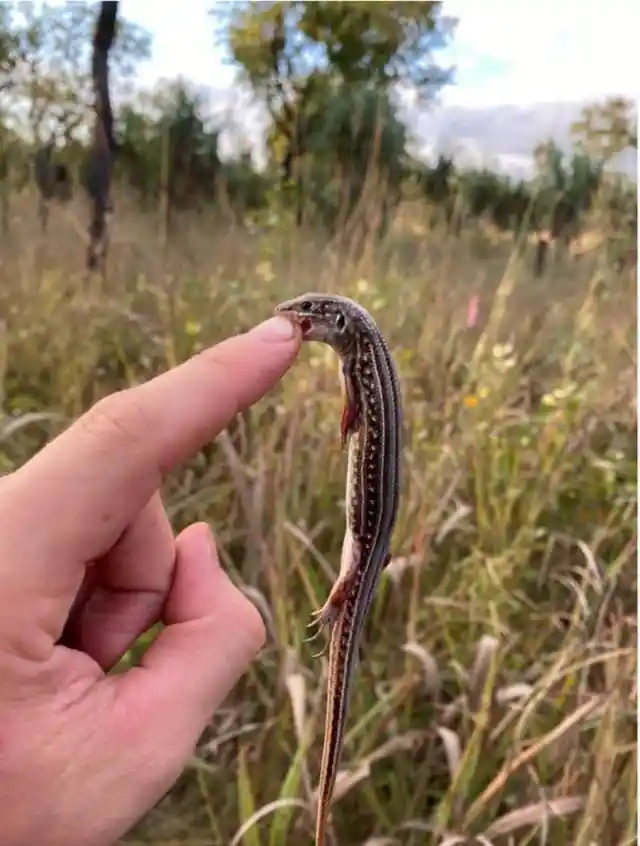
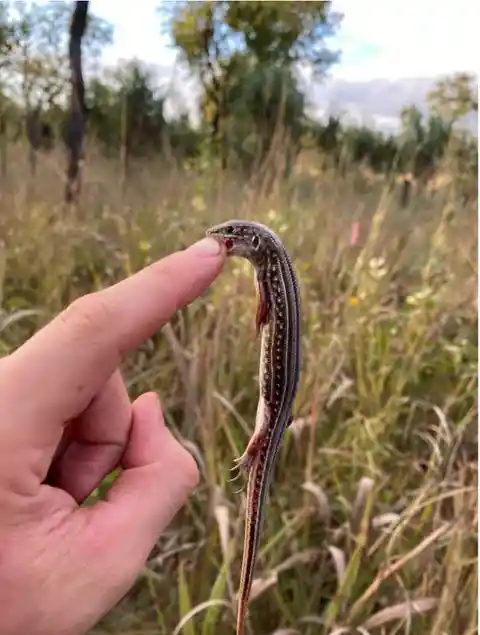
Ouch! Brace yourselves for a wild encounter, my fellow adventurers, as we come face to face with an unlikely protagonist who's showing us exactly who's boss. Meet the skink, a creature not to be trifled with. This feisty little fellow is just one of the 1,200 members of the Scincidae family, dwelling underground across every corner of our planet. Don't let its small size fool you - these skinks may measure a mere eight inches at most, but they possess a mighty attitude.
Now, you might be wondering, how painful is it when a skink sinks its teeth into your finger? Well, my friends, it's not exactly a picnic in the park with an ice cream cone, but it's not exactly a walk through fire either. You see, despite their menacing appearance, skinks are actually quite mild-mannered. They may look like fearsome lizards, but fear not, for they are neither venomous nor inclined to launch a full-scale attack on unsuspecting humans.
We dare not suggest that you start inviting skinks to run amok all over your body, of course. However, should you find yourself on the receiving end of a skink's curiosity, it won't be the worst thing that has ever happened to you.
So my intrepid companions, let this tale be a lesson in appearances often deceiving. The next time you cross paths with a skink, salute this tiny creature with respect, for though small in stature, it holds its own in the game of survival. And should you find a skink laying claim to its territory, beware, for you are in the presence of a true boss.
And there you have it, the bite of the boss - a story of a skink defying expectations and reminding us that even the tiniest creatures can pack a surprising punch.
52. When Ticks Attack - A Battle of Parasites
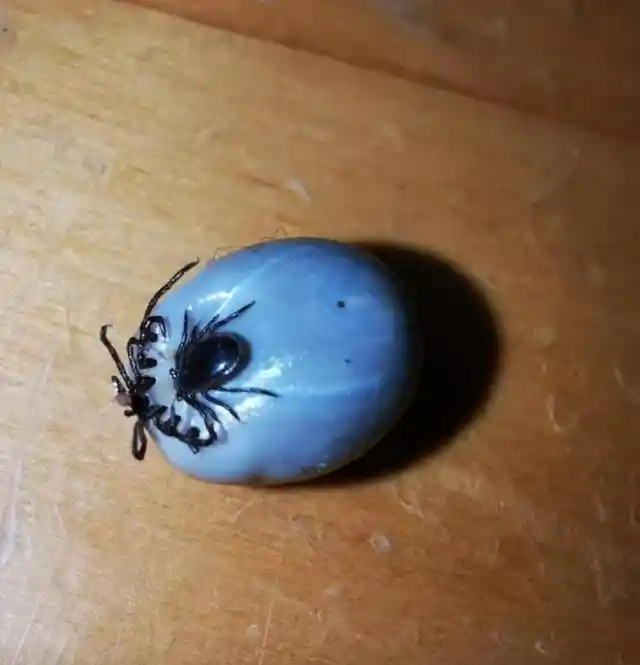
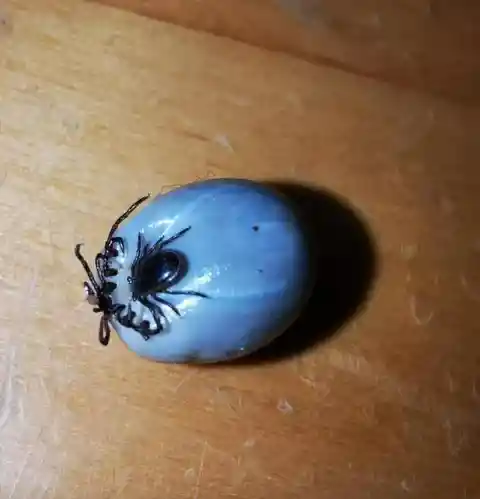
Hold onto your hats, fellow nature lovers, for we bear witness to a sight that will make your blood run cold. Feast your eyes on this image of tick on tick violence, a nightmare scenario that might make you squirm. But let us be clear, dear friends, the scene before us is no anomaly - in fact, it is quite common in the animal kingdom.
You see, these hungry little ticks seldom bother with tracking down other types of prey. Rather, they feed off of each other, engaging in a brutal form of hyperparasitism - a fancy term to describe a parasite that targets and feeds on another parasite rather than on the host animal. Now, that's what we call working smart, not hard.
Unsurprisingly, this behavior is most prevalent in soft ticks, as well as male hard ticks that feed on female hard ticks. The image before us is a classic example of hyperparasitism, with one tick latched onto another, greedily draining it of its life force.
So, my daring companions, let us not be fooled by the tiny size of these parasitic pests. They may be flecks on our skin, but they are formidable in their own right. And the next time you find yourself scratching at a tick bite, remember - it's not just you they're after, but their own kind too.
And there you have it - when ticks attack. A wondrous insight into the vicious world of parasites, a world where there's no honor among thieves - even if they can't help being parasites.
53. The Battle of the Titans: A Sperm Whale's Struggle
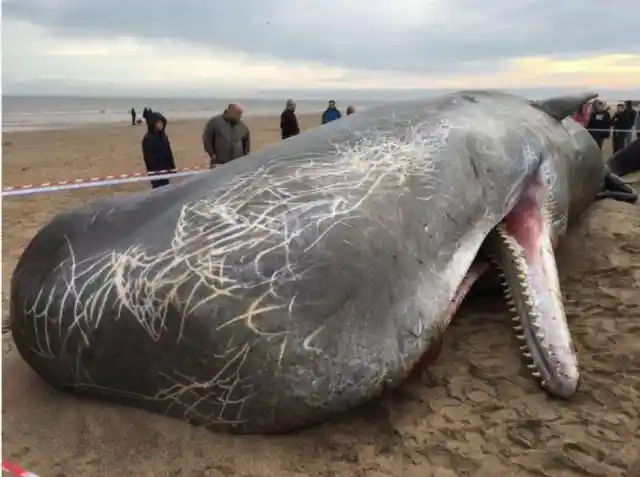
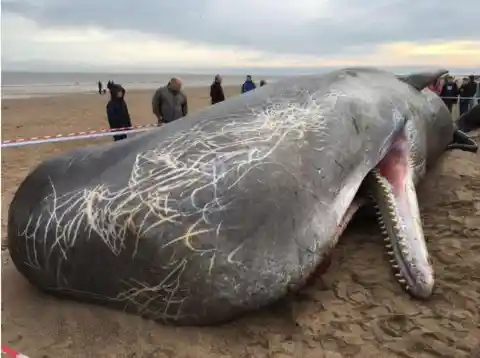
Imagine, if you will, waking up to thoughts of violence in the watery depths. It's not exactly the stuff of morning musings, but brace yourselves for this awe-inspiring photo that lays bare the dangers lurking beneath the waves - even for the mightiest of creatures. Behold, a sperm whale carcass adorned with the scars of a battle with a squid. Talk about living life on the edge.
Now, we can't say for certain whether the squid injuries were the cause of this magnificent whale's demise, or if it met its end through other means. All we know is that this colossal creature has led a life full of intense encounters. Just imagine the epic clash between the ocean's giants, the lethal dance between predator and prey unfolding in the deep, dark waters.
But hold on, my curious companions, for this is not the only tale of its kind. In 2021, another sperm whale washed up on the shores of Australia, bearing similar battle scars from an epic squid confrontation. While it may be disheartening to witness such brutal encounters, this very phenomenon provides invaluable insights into the biology of these magnificent creatures.
So, let us contemplate the secrets of the sea and its enigmatic inhabitants. It's a world where violence and beauty intertwine, where the struggle for survival plays out in glorious chaos. And as we delve deeper into the mysteries that lie beneath the waves, we uncover the hidden stories of awe-inspiring battles fought in the dark realm of the ocean.
And there you have it, the battle of the titans - a haunting snapshot that reminds us of the raw power and untamed nature of life beneath the surface.
54. Giants of the Sea: Steller Sea Lions Take Over a Boat


In the vast expanse of the ocean, where creatures of extraordinary size roam, there exists a magnificent species known as the Steller Sea Lion. Brace yourselves, folks, for these creatures can grow to mind-boggling proportions. We're talking lengths of over 10 feet and weighing in at a whopping 2000 pounds! No, this is no magic of Photoshop, my friends. These sea lions are truly colossal, as big as a boat itself.
Picture this: males stretching nearly 10 feet in length, tipping the scales at around 1,199 pounds. These marine marvels stand proudly among the upper echelons of carnivores. Yet, even they must stay on high alert, for lurking in the depths are predators like killer whales and great white sharks, ready to make a meal out of them.
But here's a twist in the tale, my curious comrades. There's one predator that poses no threat to the mighty Steller Sea Lion - fishing boats. Let me take you back to December 2019, where a most peculiar sight unfolded in the waters of the Eld Inlet in Olympia, Washington. Imagine a small boat, struggling against the weight of not one, but two of these enormous creatures. The boat, essentially drowning under their massive forms, had become their temporary residence.
As the locals gathered around, captivated by this unusual spectacle, Josh Phillips recounted the scene to Popular Mechanics: "As we got closer, we noticed it was not sinking but instead there were two very large Steller sea lions on board."
And there you have it, folks. A real-life tale of giants taking over the seas and making themselves right at home on a modest boat, reminding us that the ocean's marvels never cease to surprise us.
55. Caught in Amber: The Ancient Spider That Defies Imagination

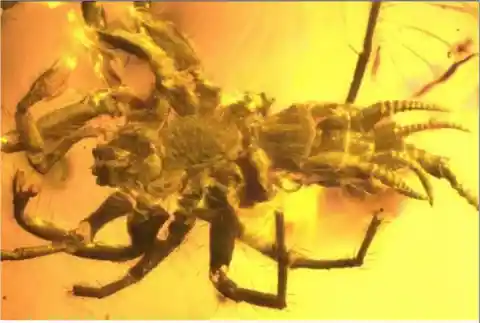
Prepare yourselves, dear readers, for a tale straight out of a spine-chilling horror movie. But beware! This is not fiction; it is the mind-boggling wonders of nature. Behold, a prehistoric spider-like arachnid trapped in a golden prison of amber. As we gaze upon this ancient creature, we can't help but notice its uncanny resemblance to a scorpion, sending shivers down our spines.
Let's delve deeper into this extraordinary discovery, my curious friends. This ancient spider, preserved in amber, bears an astonishing resemblance to the Lagonomegopidae spiders that roamed the Earth during the Carboniferous period. And, wait for it, many of these spiders have been found encased in tree resin, their pregnant bodies frozen in time, ready to release a horde of hatchlings.
An article in the prestigious journal Proceedings of the Royal Society B: Biological Sciences unveils a breathtaking image: "Here, for your amazement, we have a female lagonomegopid spider clutching an egg sac teeming with unhatched eggs. This is precisely how a living female spider, nestled snugly in a crevice on tree bark, would appear."
Imagining the world of these ancient spiders, trapped in amber with their hidden stories, evokes a mix of fascination and apprehension. It is a glimpse into a past long gone, where creatures of unimaginable forms and behaviors roamed the Earth.
And so, my fellow adventurers, we find ourselves captivated by this eerie photo of an arachnid imprisoned for eternity in amber, reminding us of the astonishing mysteries and uncanny beauty that nature has to offer.
56. Against All Odds: The Indomitable Hyena Who Defied Paralysis
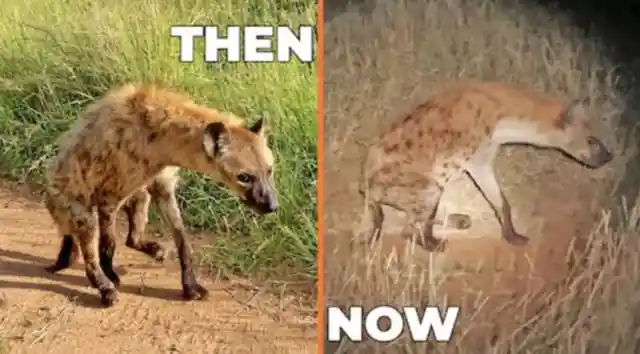
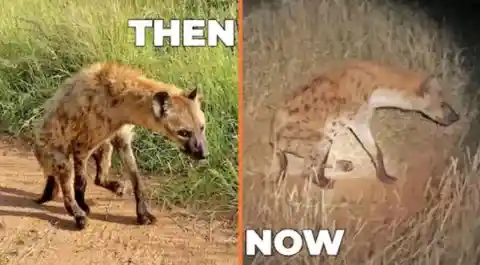
Prepare yourself for a story that will leave you in awe, my friends. Gather 'round and let me tell you about a renowned hyena who faced a seemingly insurmountable challenge. Nine months ago, this creature's legs were rendered paralyzed in a ferocious lion attack. Yet, against all odds, this tenacious predator not only survived but transformed into a dominant force within its clan.
Hyenas, known for their fearsome nature and relentless determination, are like the T-800s of the animal kingdom. They would take on a tornado if it meant a chance of devouring it. But this particular hyena had faced a dreadful fate. Its once powerful legs, the very tools that propelled it through the wild, had been rendered useless. A sight that would break any heart.
Enter Cathan Moore, a wildlife photographer who happened upon a similar handicapped hyena in the vast Kruger National Park in South Africa. The scene before her left her absolutely astounded. In her own words, she shared her experience with Newsweek: "At first glance, I was truly taken aback and felt a pang of sorrow for the hyena, who appeared in a pitiful state. It took a few moments for me to grasp the reality unfolding before me. Despite its handicap, this creature stood tall and exhibited perfect health. I couldn't help but feel an overwhelming sense of pride for this animal, as it had overcome unimaginable adversity."
This incredible tale serves as a reminder, my fellow nature enthusiasts, that strength and resilience can emerge from the most unexpected places. The hyena, once crippled by a vicious predator, rose above its physical limitations, becoming a symbol of triumph over adversity.
And so, we find ourselves captivated by the remarkable story of the hyena who defied paralysis, a testament to the remarkable spirit that thrives within the animal kingdom.
57. The Horned Lizard: A Marvelous Master of Distraction
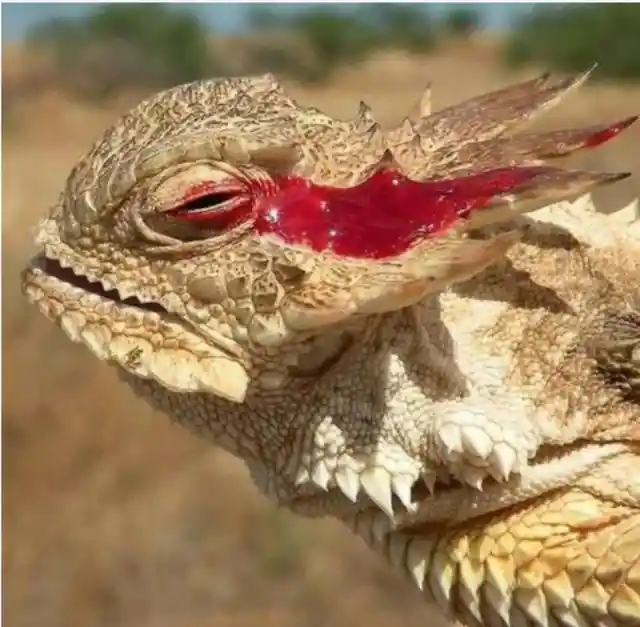
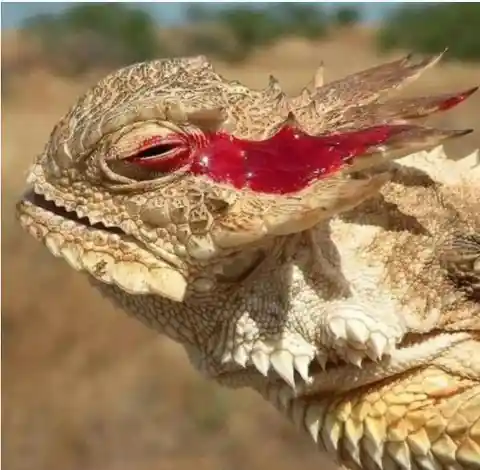
Picture this, my friends: the vast deserts of Guatemala, the untamed wilderness of Mexico, and the rugged western regions of the United States. In these arid landscapes, the horned lizard scampers to and fro, navigating a treacherous world filled with coyotes, snakes, and hawks. But these reptiles don't simply dig themselves into the ground or hide in the underbrush. Oh no, they have a much more crafty defense mechanism - the ol' blood eye.
When these horned lizards find themselves backed into a corner by a relentless predator, do you know what they do? They literally shoot blood right out of their eyes! Now, this blood doesn't actually inflict any pain on their pursuers, but it's enough to send them into a frenzy of confusion and alarm. Talk about playing mind games!
Imagine the scene, my fellow nature enthusiasts. The horned lizard, facing imminent danger, channels its inner superhero and releases a stream of blood from its eye sockets. It's a remarkable sight, both fascinating and slightly disturbing. But this bizarre spectacle buys the lizard the precious seconds it needs to make a swift escape, leaving its bewildered attacker scratching its head in disbelief.
Nature never ceases to amaze, does it? The horned lizard, with its eccentric blood-ocular trick, has proven itself a master of distraction. It's a wondrous adaptation, allowing these magnificent creatures to survive and thrive in their harsh, predator-filled environment.
And so, we are left spellbound by the tale of the horned lizard, a small warrior armed with a biological weapon of surprise. Its blood eye defense serves as a reminder that even in the face of danger, nature always finds a way to adapt and prevail.
58. The Camouflaged Chiefs: Tigers and Their Invisible Hues


Listen up, my friends, as we delve into the fascinating world of the jungle's stealthiest stalkers! Tigers, those fearsome predators that strike fear into the hearts of all, possess a secret weapon that sets them apart from the rest. You see, while us humans perceive them as vibrant orange beings, to the deer and boar, their common prey, these majestic beasts actually blend in seamlessly with the lush greenery. How, you ask? Well, it's all about the power of camouflage.
Picture this, my fellow nature enthusiasts: a tiger prowling through the dense jungle, its coat adorned with striking orange, black, and white patterns. At first glance, you might think this would make them stand out like a sore paw. But oh, how wrong you would be! Tigers have mastered the art of blending into their surroundings, becoming one with the foliage. Now you see me, now you don't!
But why, you may ponder, do the tigers' colors appear differently to their prey? Let me enlighten you. You see, deer and boar, those unsuspecting ungulates, are what we call dichromats. They only possess two functional color receptors, which means they struggle with distinguishing between green and red-orange tones. Poor things, they can't even comprehend the tiger's true hues!
So there you have it, folks. Tigers, those camouflaged chiefs of the jungle, are not only mighty due to their size and strength but also because they have mastered the art of blending into their environment. It's a genius adaptation that renders them practically invisible to unsuspecting prey, leaving them clueless in the face of danger.
And so, the tale of the tigers' hidden hues continues to astound us. These magnificent beasts, with their remarkable camouflage, serve as a constant reminder that nature's secrets are boundless. The jungle's master illusionists, the tigers, reign supreme with their invisible presence amidst the vibrant tapestry of the wild.
59. The Epic Battle: When the Wasp Messed with the Mussel
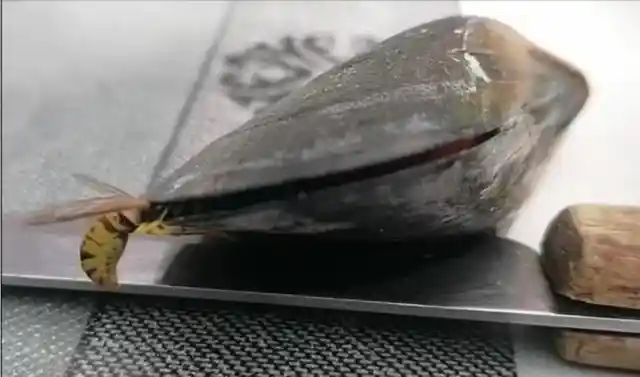

Prepare yourselves for a tale of unexpected warfare, my friends. In a world where insects and mollusks rarely clash, a photo has emerged that defies all expectations. You see, in this peculiar snapshot, a wasp finds itself face-to-face with a living mussel, and let's just say things didn't go exactly as planned. The wasp attempted to unleash its venomous sting, only to meet its untimely demise at the hands (or should I say shells?) of the mighty mollusk.
But let's not jump to conclusions just yet. Is this truly how mussels defend themselves? Are they expert martial artists hidden beneath those seemingly unassuming shells? Well, my curious companions, the answer lies in the fascinating research conducted by Anna Dzierżyńska-Białończyk and a skilled team of scientists.
You see, these mollusks may not possess the ability to outrun their predators, but they are far from defenseless. When a mussel senses danger, it has a variety of secrets up its shell, so to speak. It can close up tightly, clamping down with incredible strength, enough to crush a would-be assailant. Yes, you heard that right! The mussel's shell becomes a fortress, turning the tables on any predator foolish enough to provoke it.
And so, we find ourselves awe-struck by the epic confrontation between the wasp and the mussel. It is a reminder that in the intricate tapestry of the natural world, battles between unexpected foes are bound to occur. The humble mussel, armed with its impenetrable fortress of a shell, proves that even the most unassuming creatures possess hidden strength.
With this story, we uncover yet another marvel of nature, where truth surpasses fiction. The wasp's ill-fated encounter with the cunning mussel serves as a testament to the unfathomable strategies employed by creatures both great and small.
60. The Terrifying Tango: When Hawks Take Down Snakes
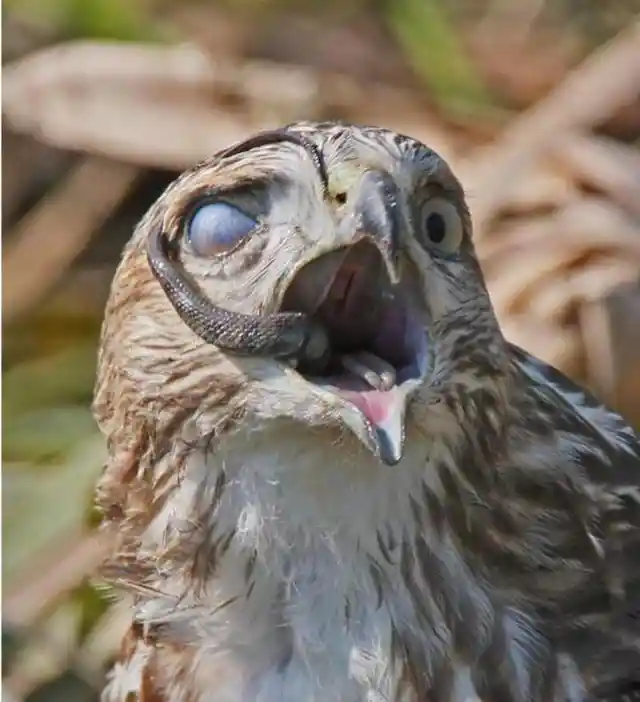
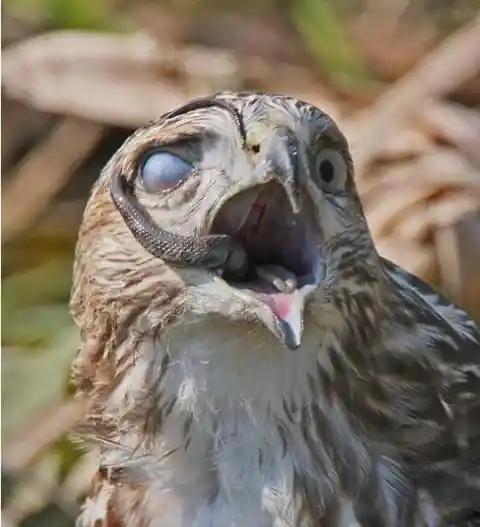
Prepare to witness a chilling display of nature's unyielding brutality, my friends. Picture this: a scene that exemplifies the harsh reality of the animal kingdom, where hawks and snakes engage in an eternal rivalry. Hawks, with their aerial advantage, often reign supreme as they watch their unsuspecting prey from the glorious heights of the sky.
You see, while snakes possess the prowess to slither, attack, and conquer a multitude of other creatures, they are not invincible. They find themselves helpless against the ruthless tactics employed by hawks, those sky-diving daredevils in search of a delectable feast. It's a battle of wits and agility, where the snake's fate is sealed as soon as the hawk swoops down with its razor-sharp talons.
When the hawk's claws firmly ensnare the snake, the game is over, my friends. The poor reptile, caught off guard and taken by surprise, can only dream of a swift end. A glimmer of hope in the grasp of the hawk would be nothing short of wishful thinking.
And thus, the stage is set for the terrifying tango between hawks and snakes. It is a chilling reminder of the unforgiving nature of the animal kingdom, where survival is a constant battle for all creatures great and small.
In this shocking display of predator versus prey, we bear witness to the undeniable truth that nature can be both awe-inspiring and heart-wrenching. The hawks, with their skyward advantage, prove that even the fiercest of predators can be taken down when faced with a masterful adversary.